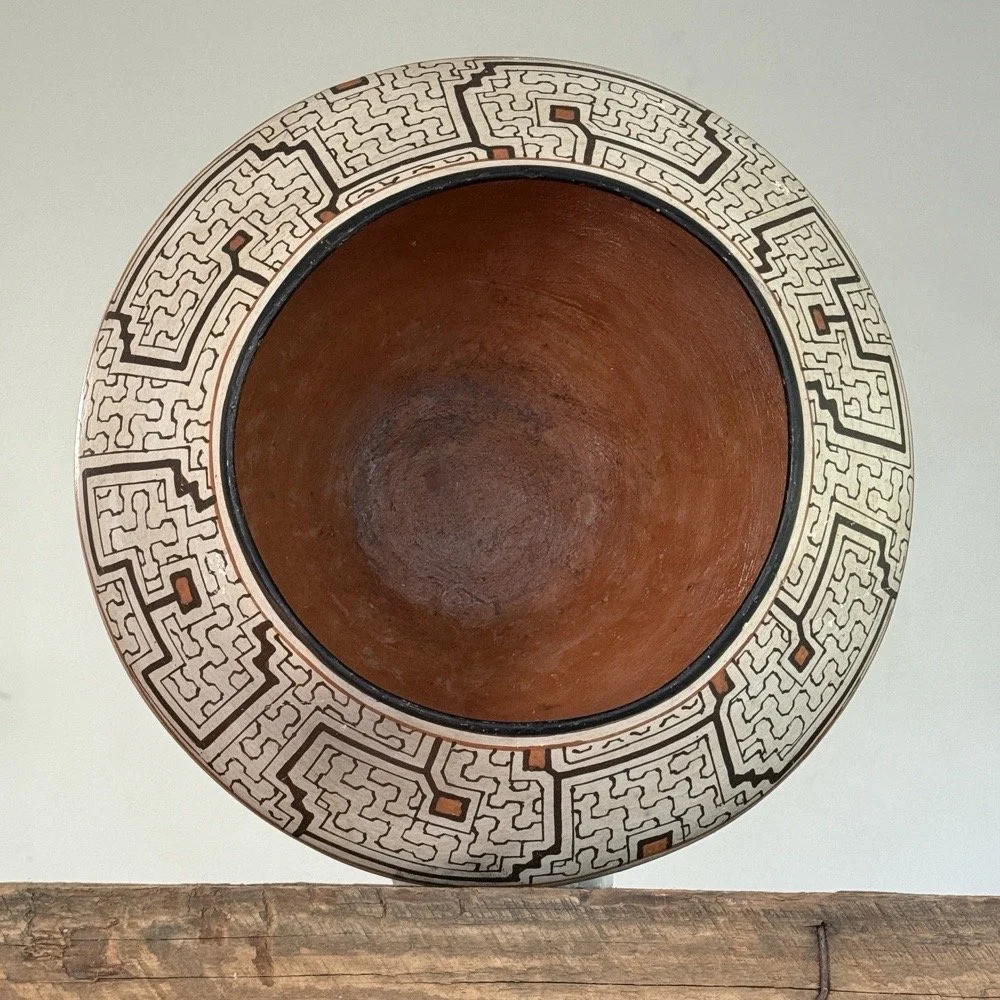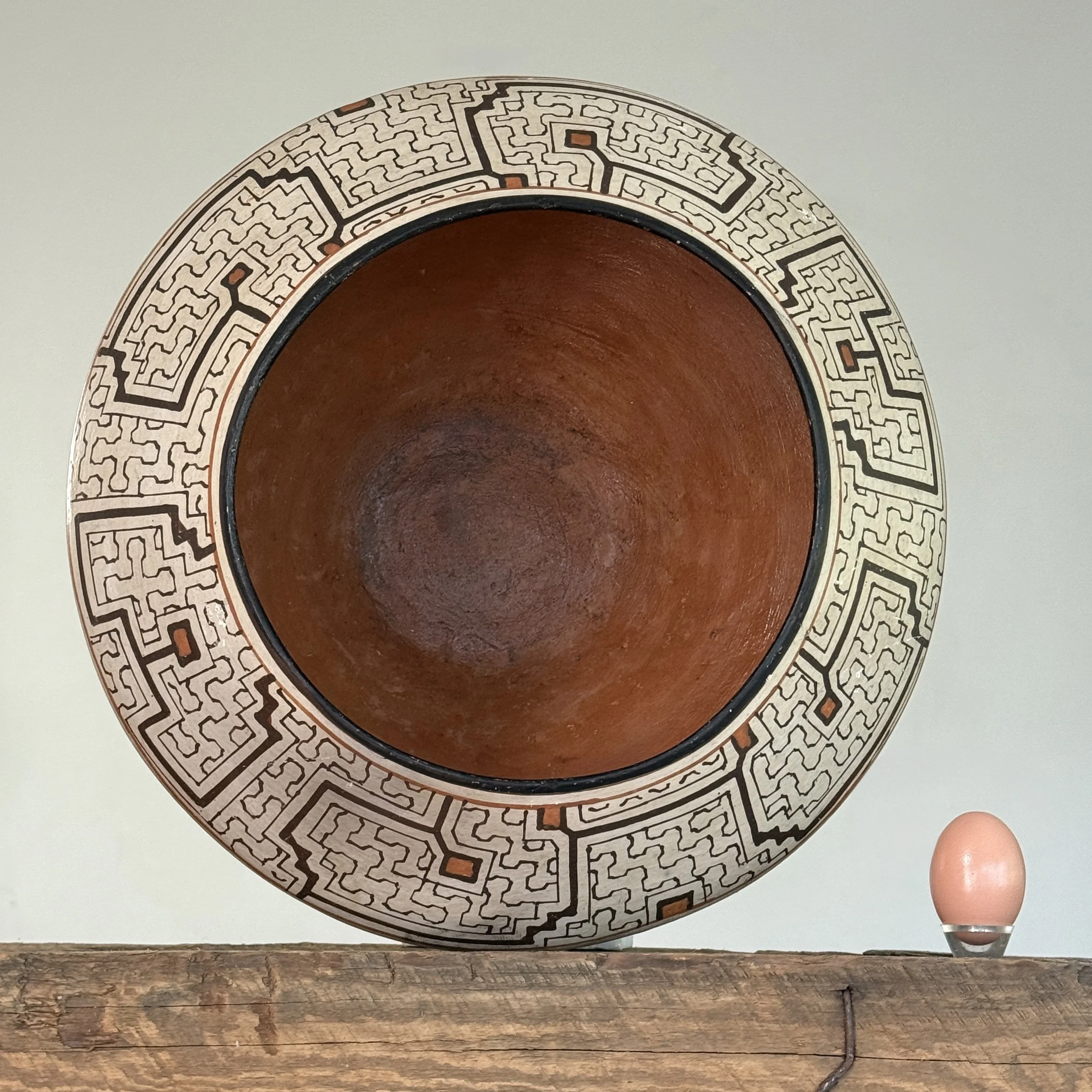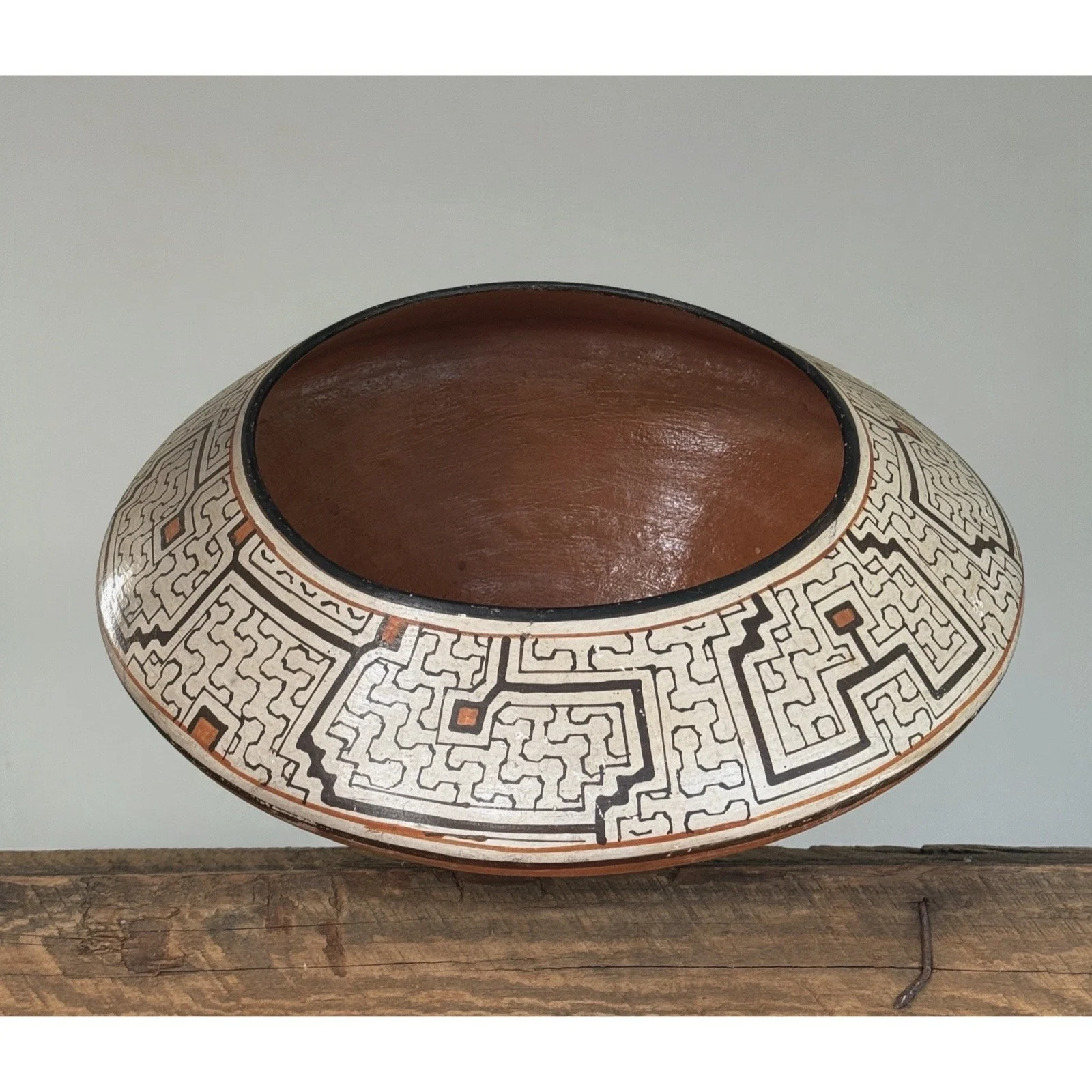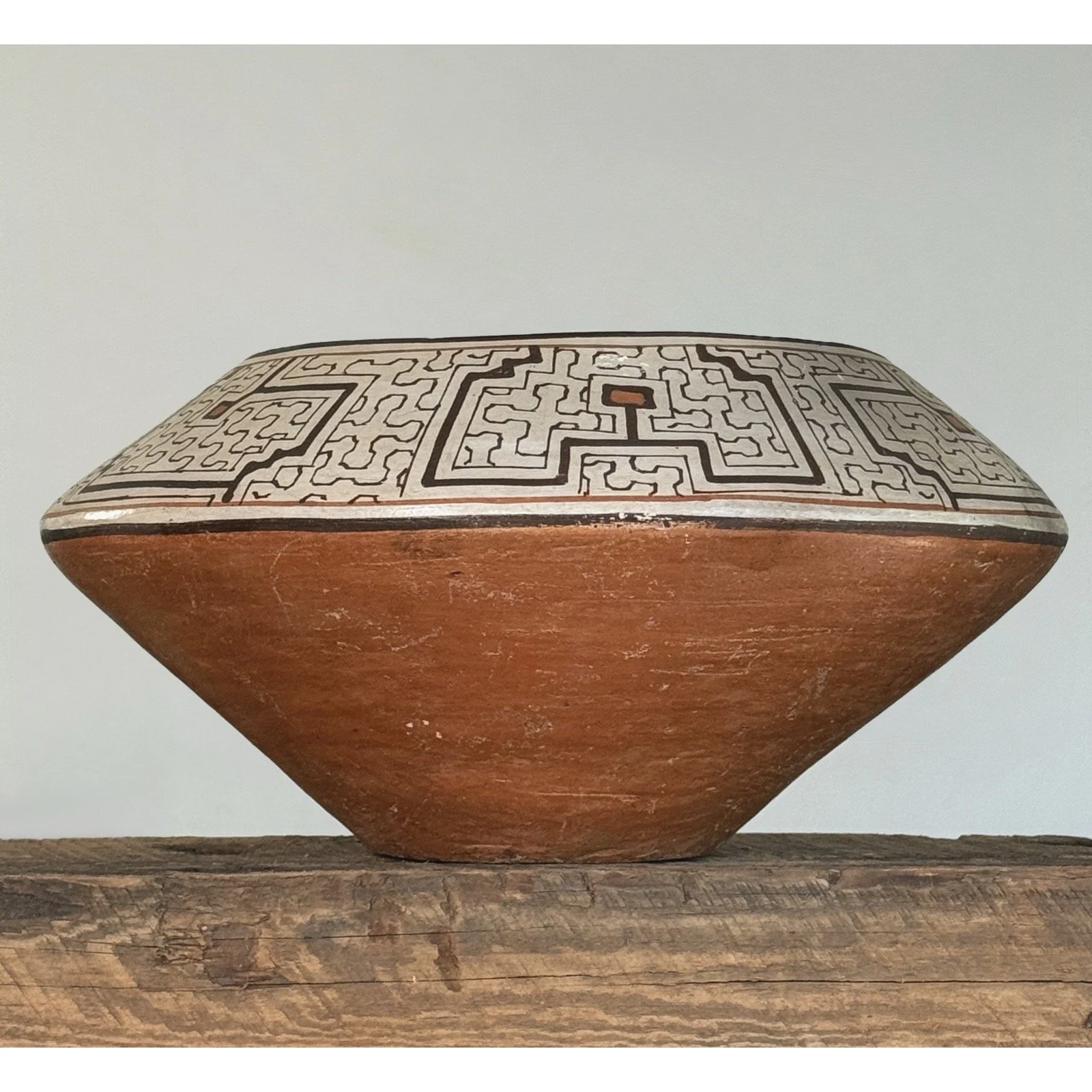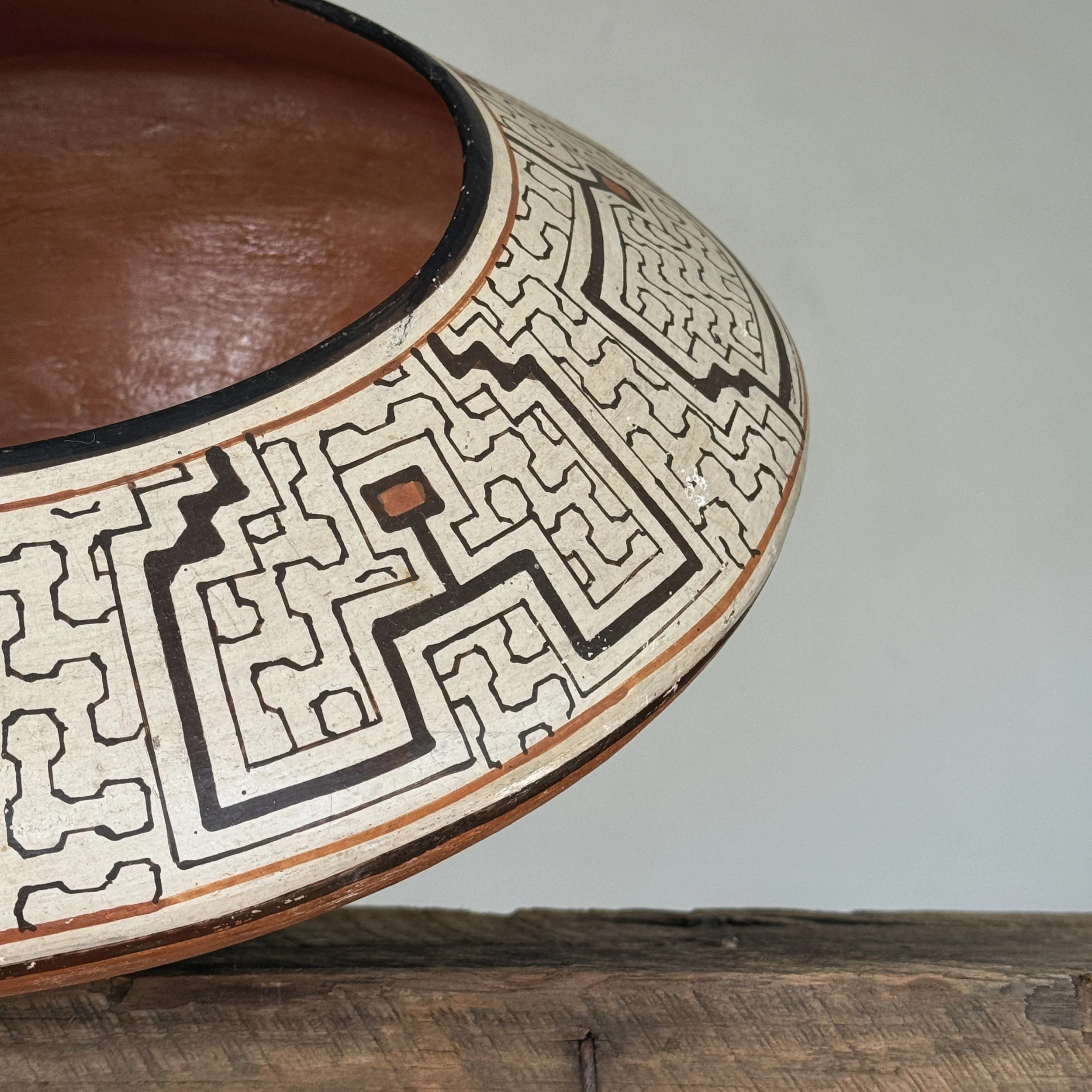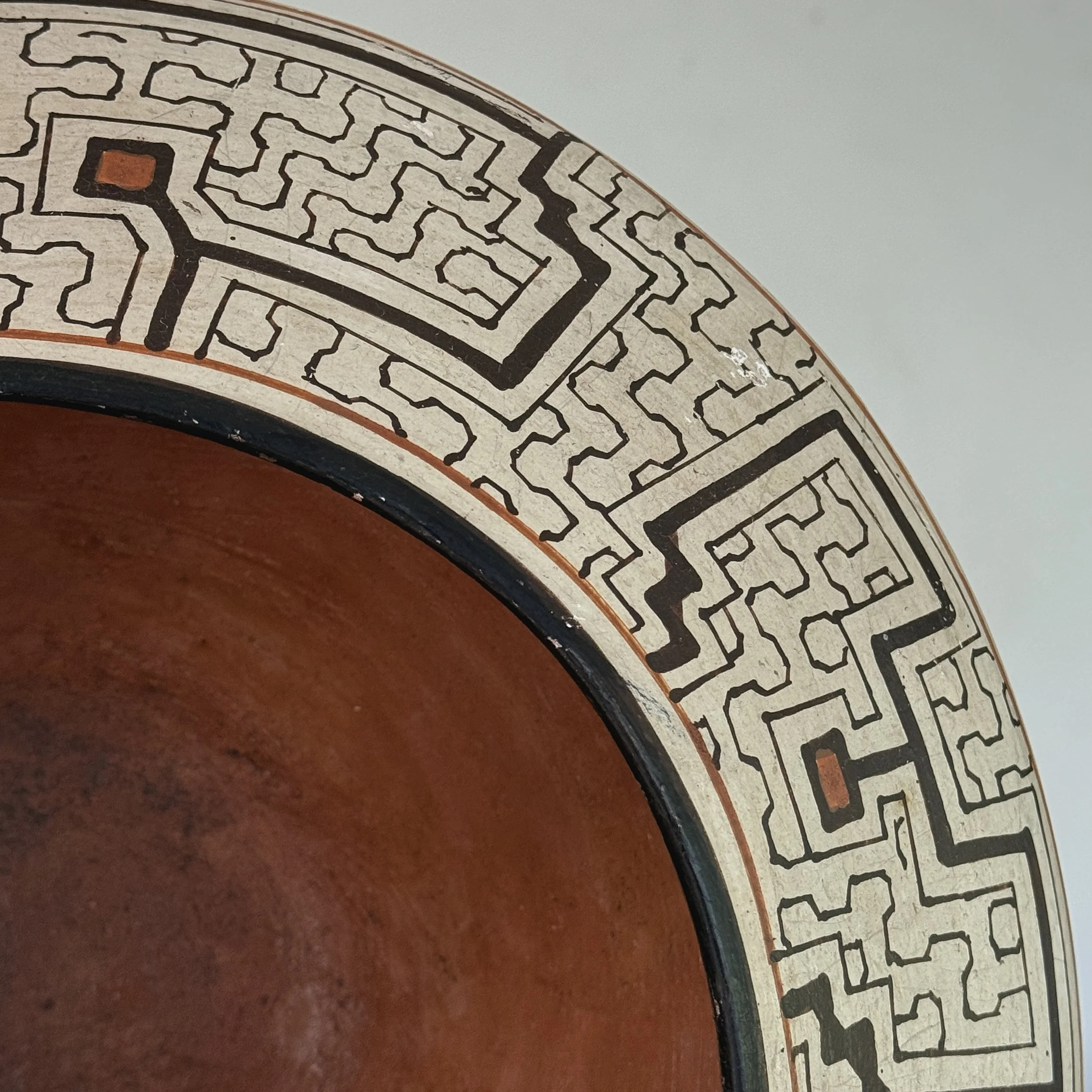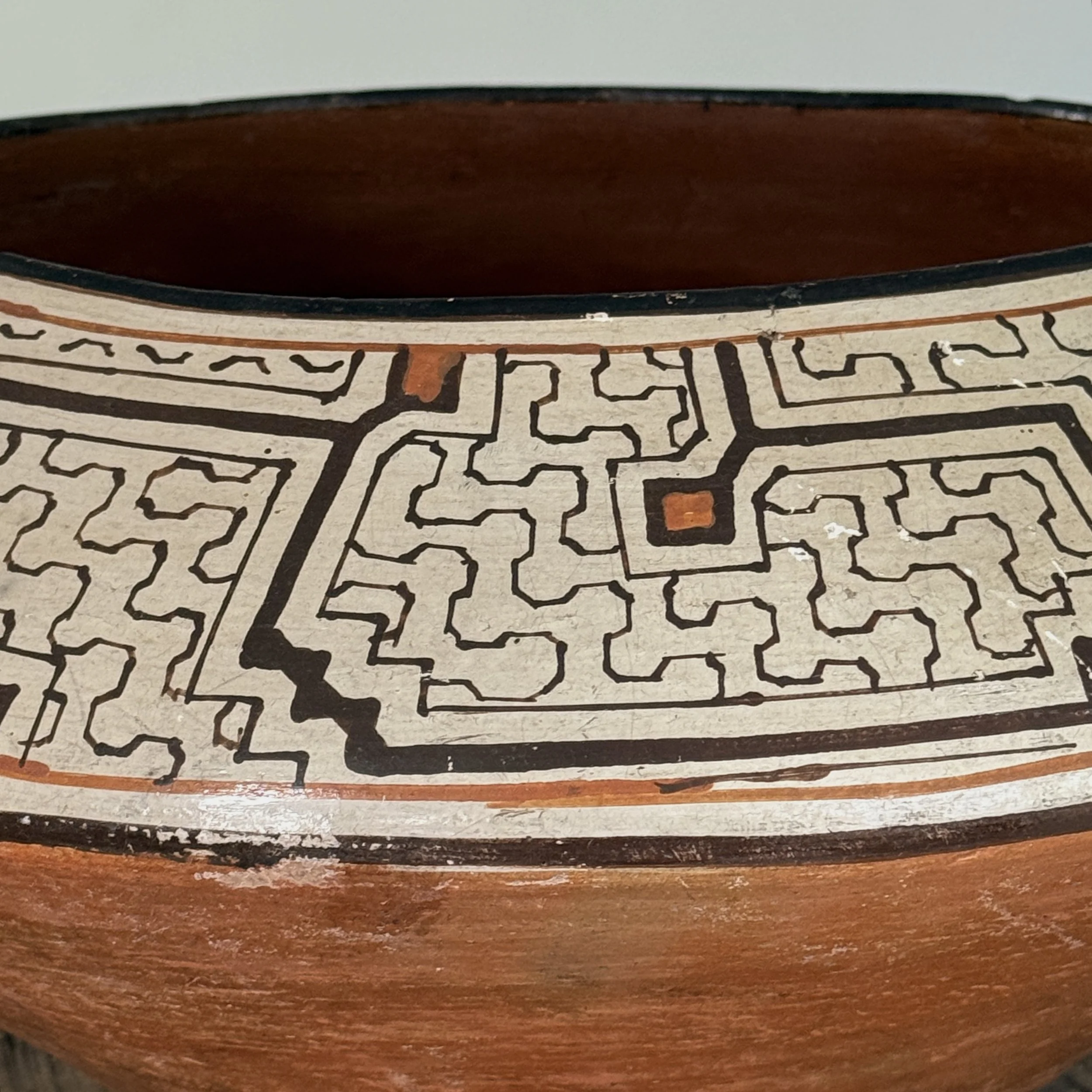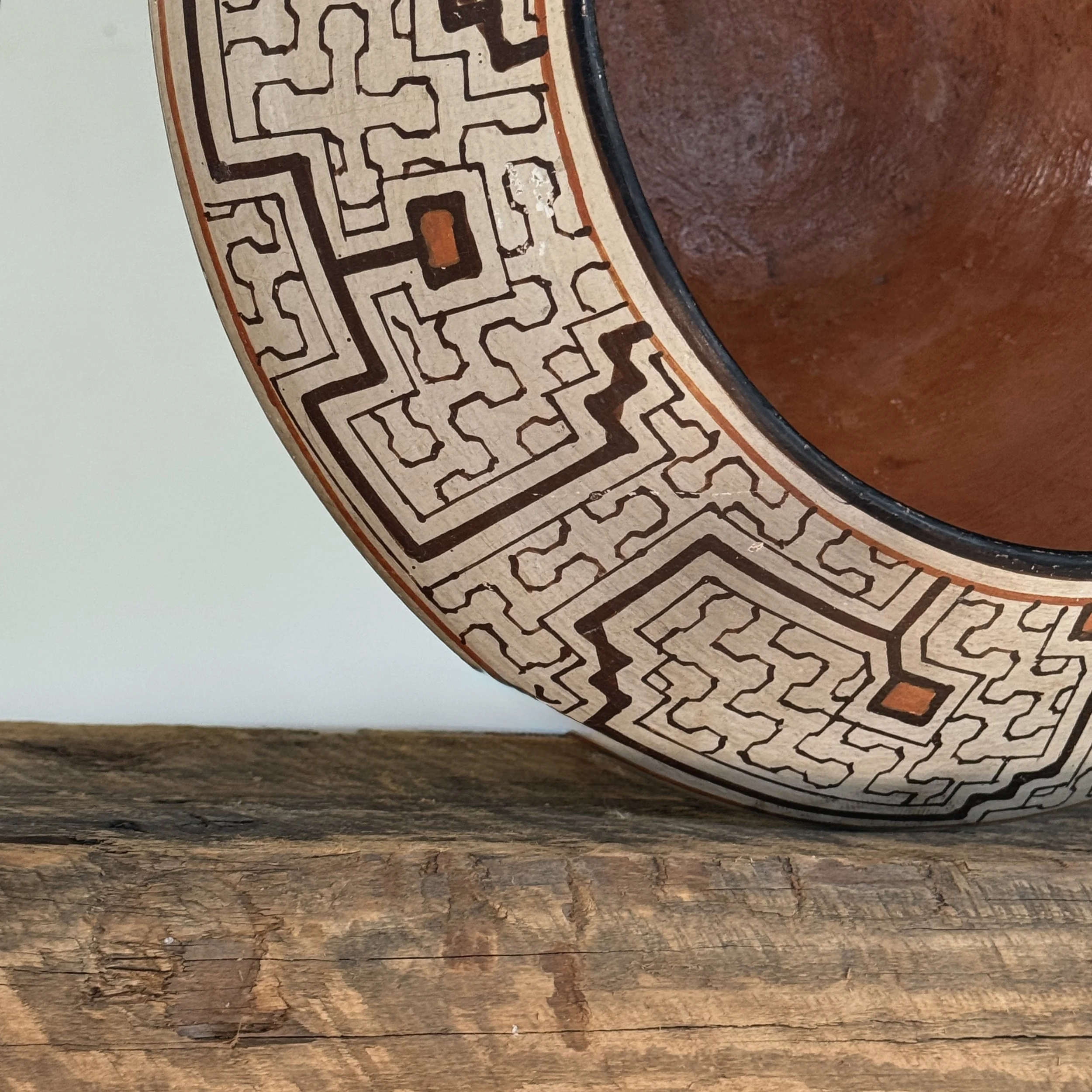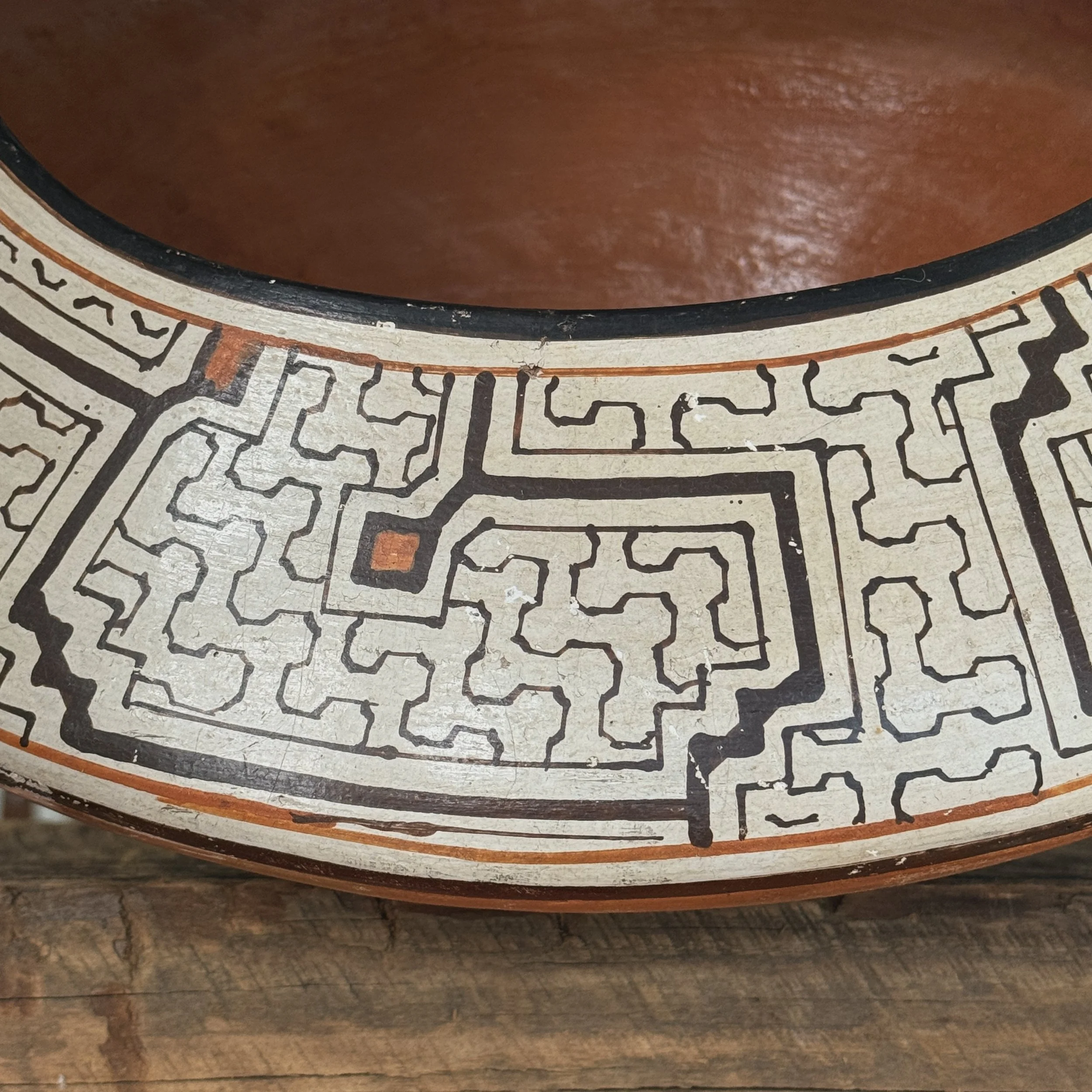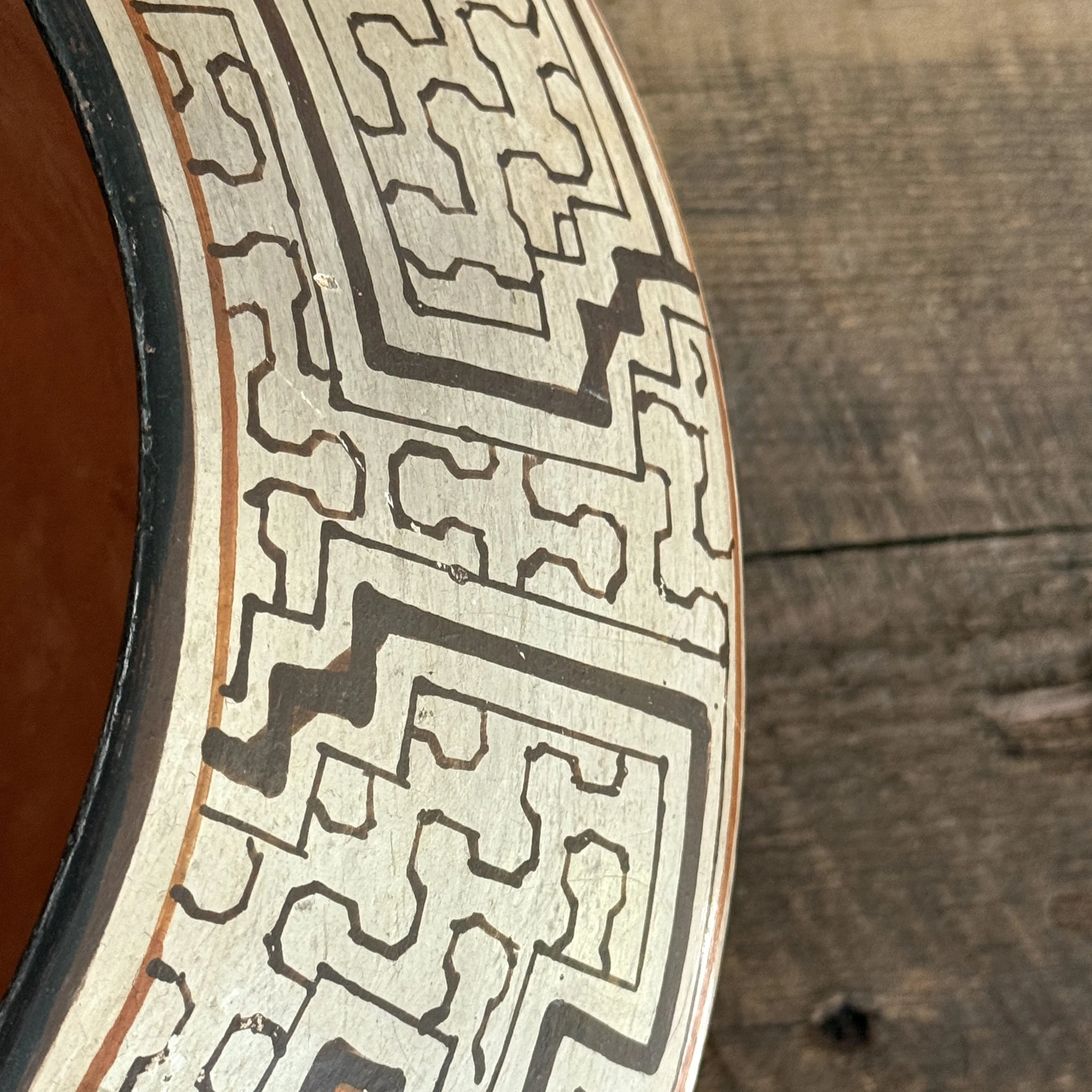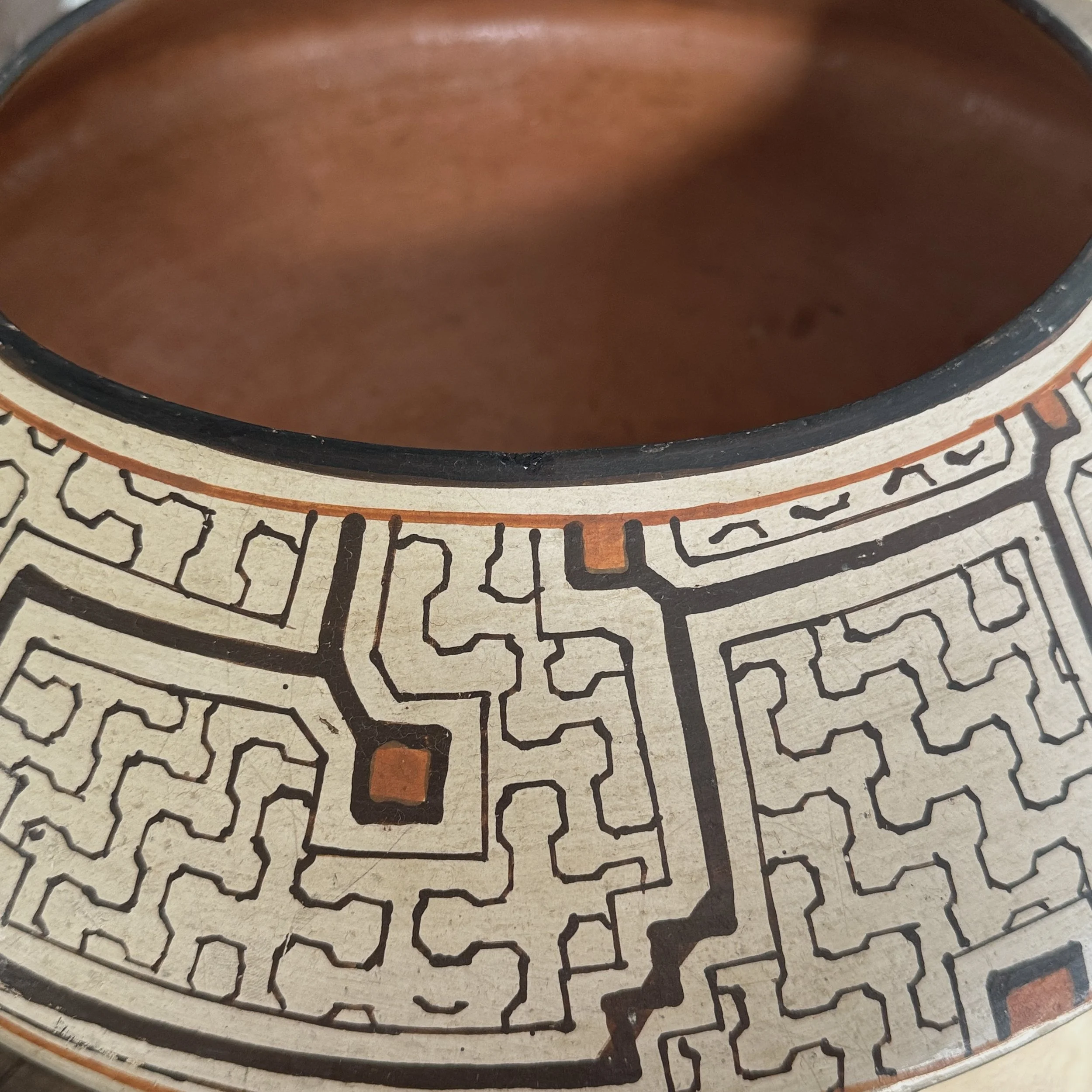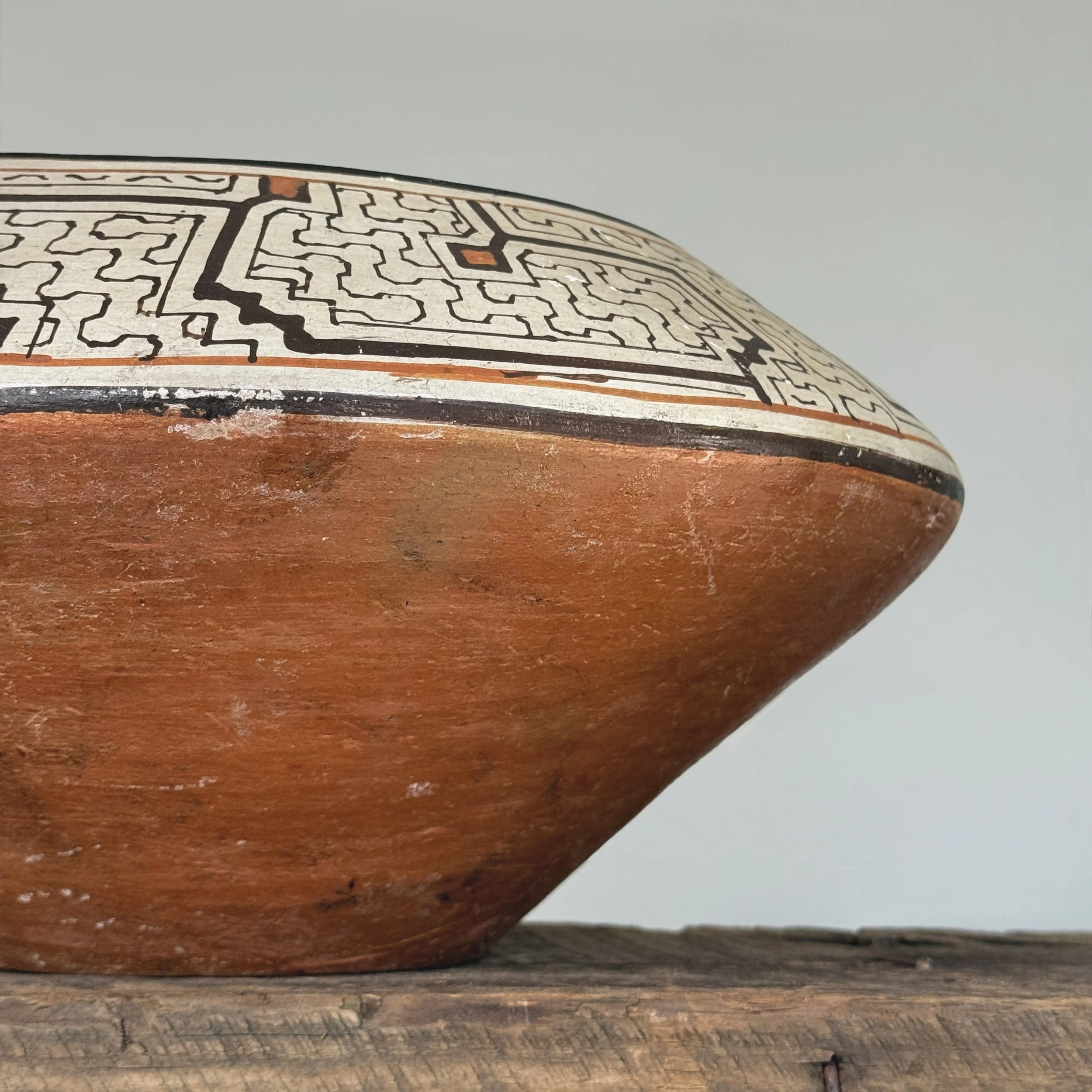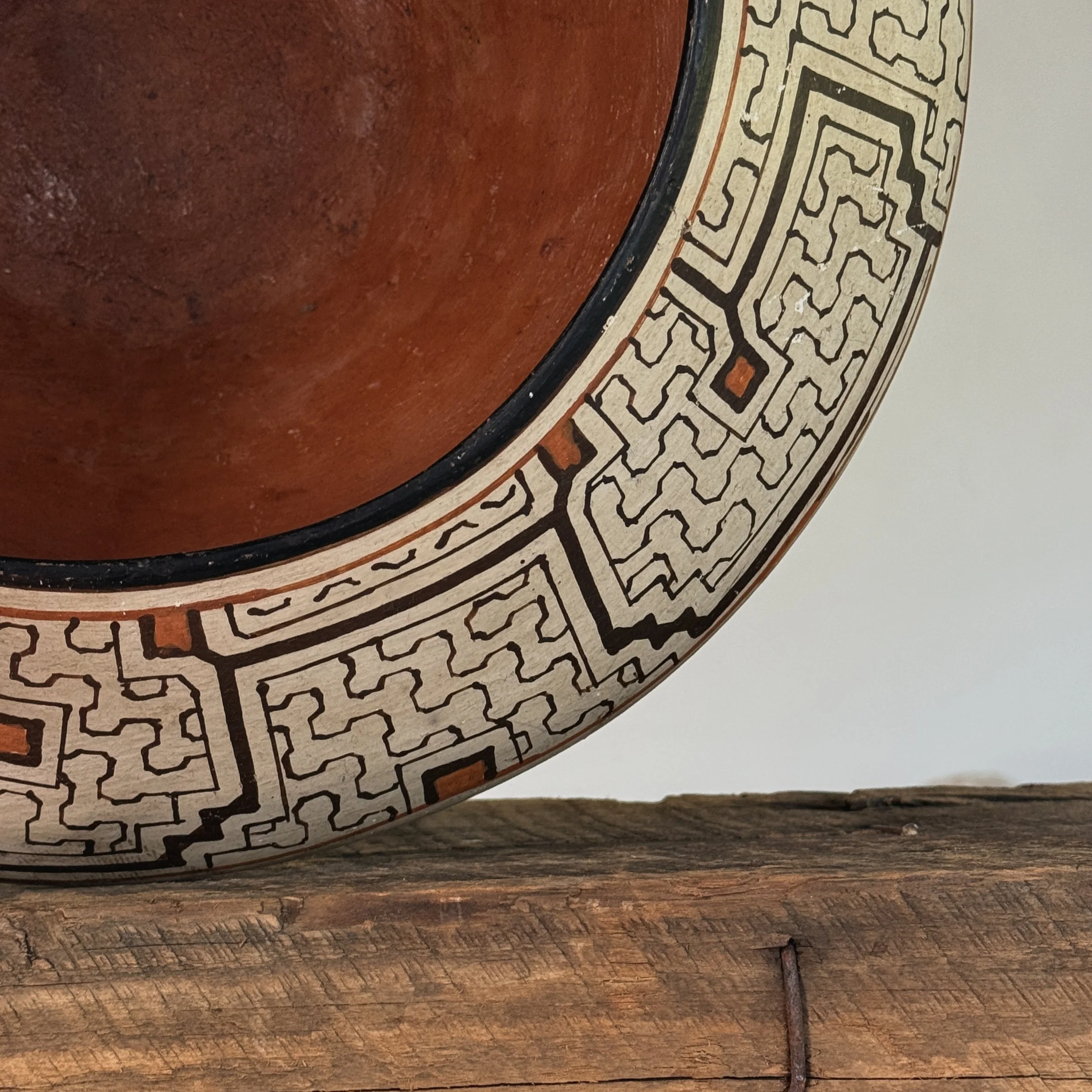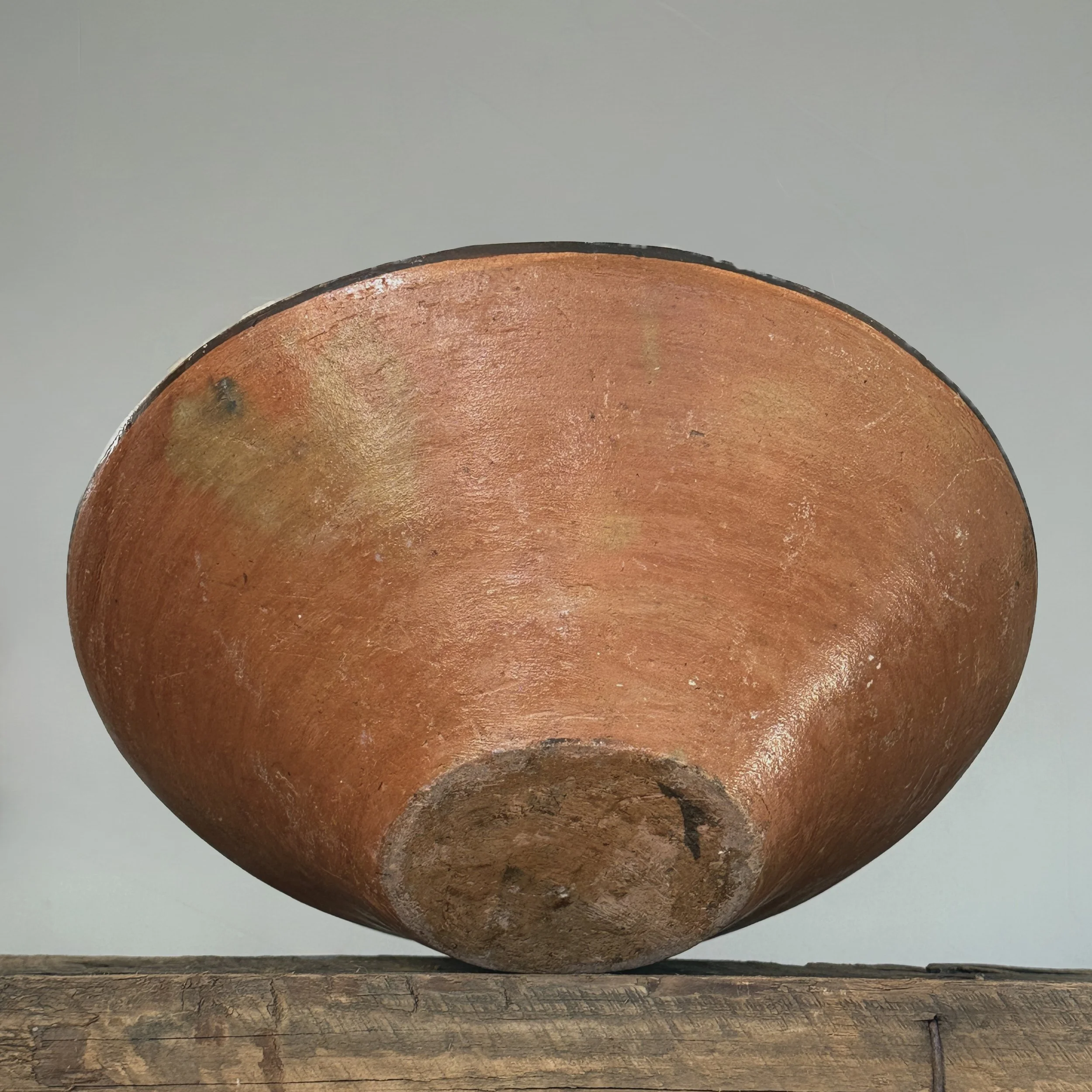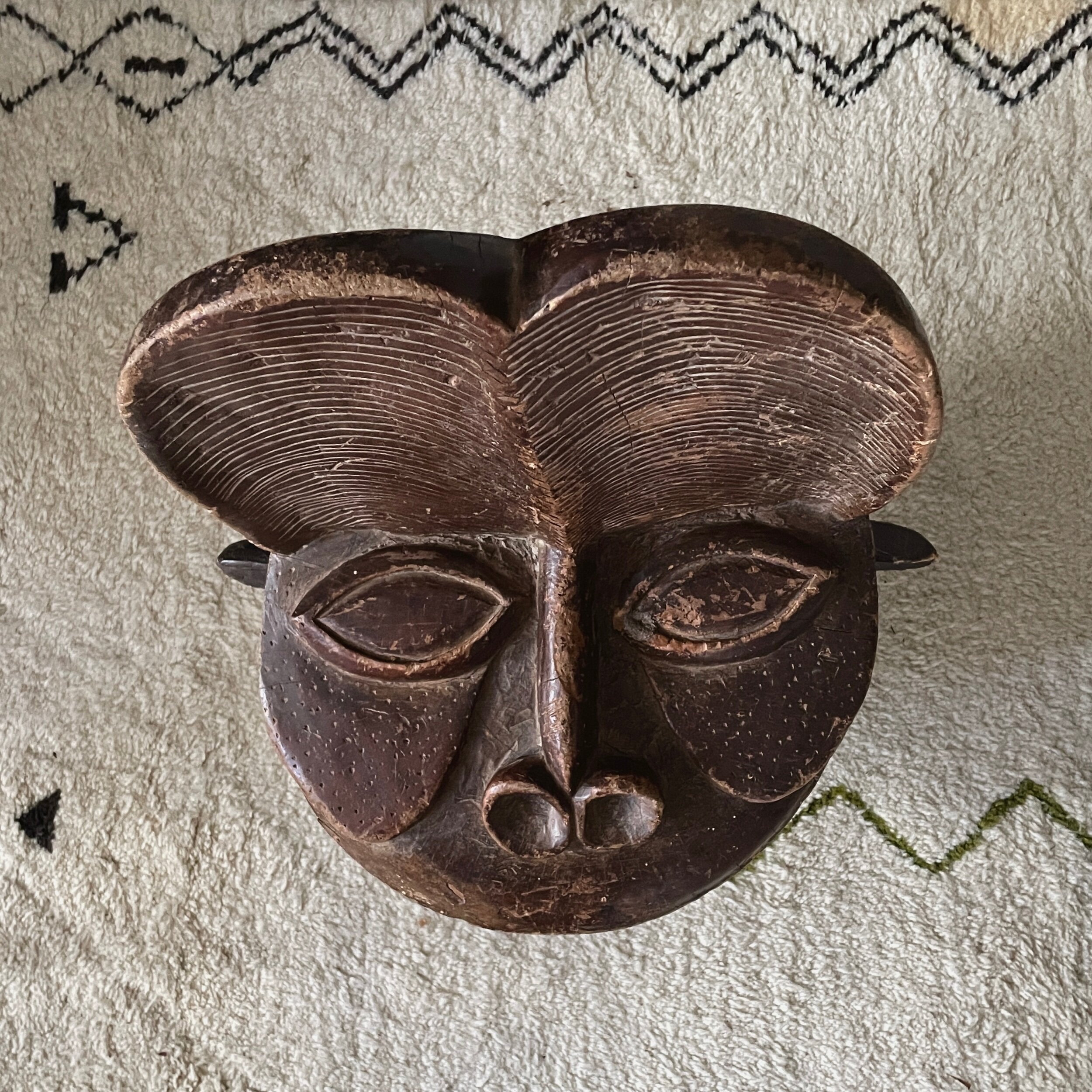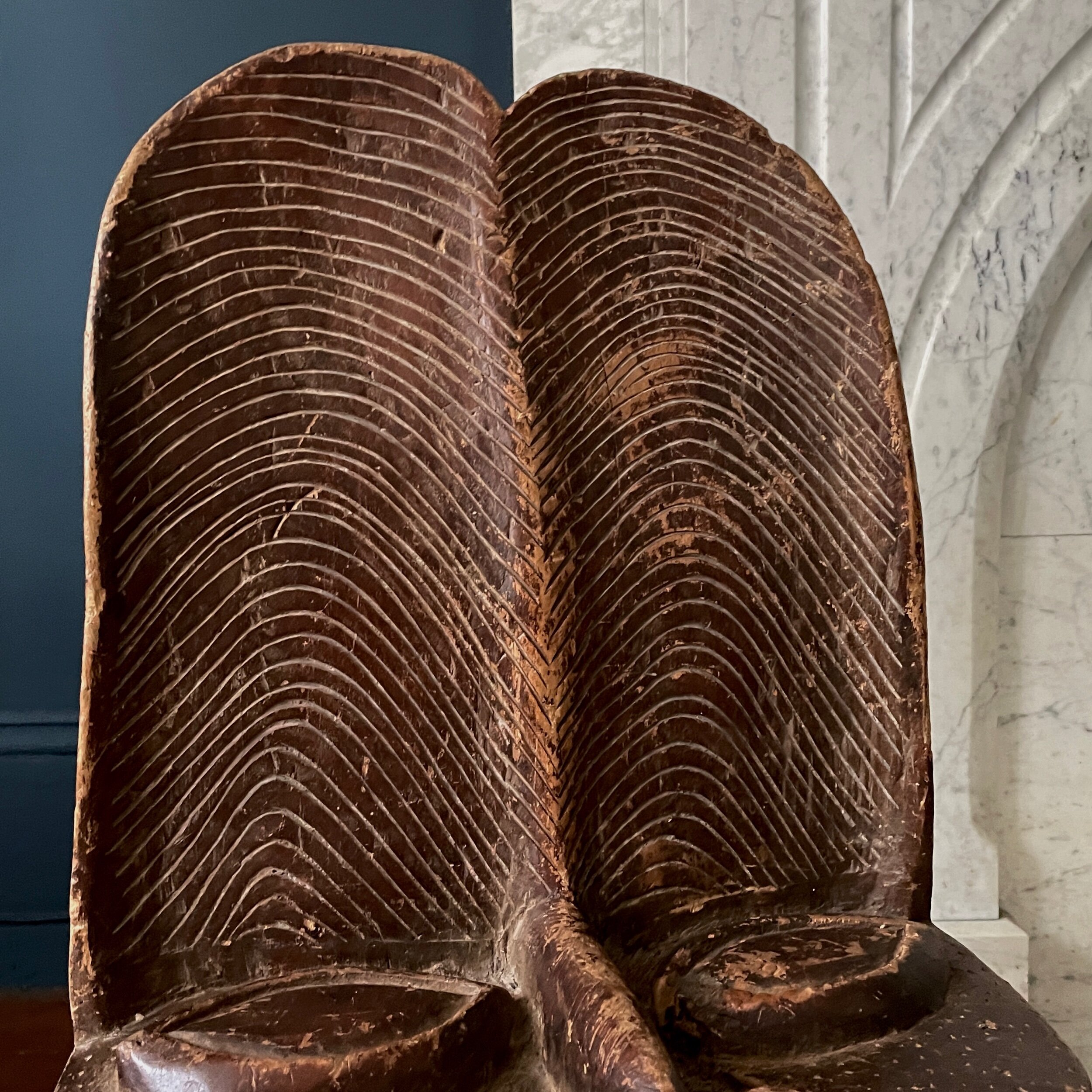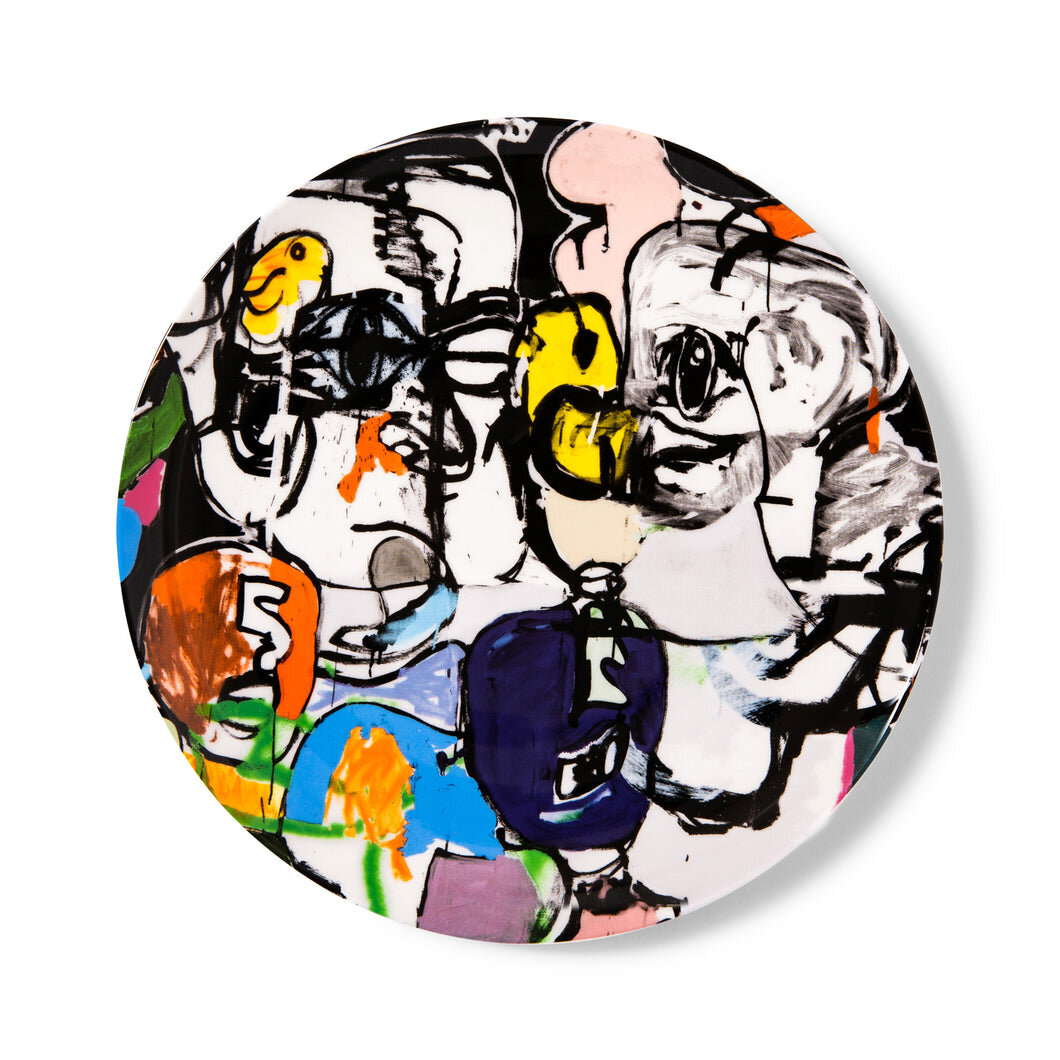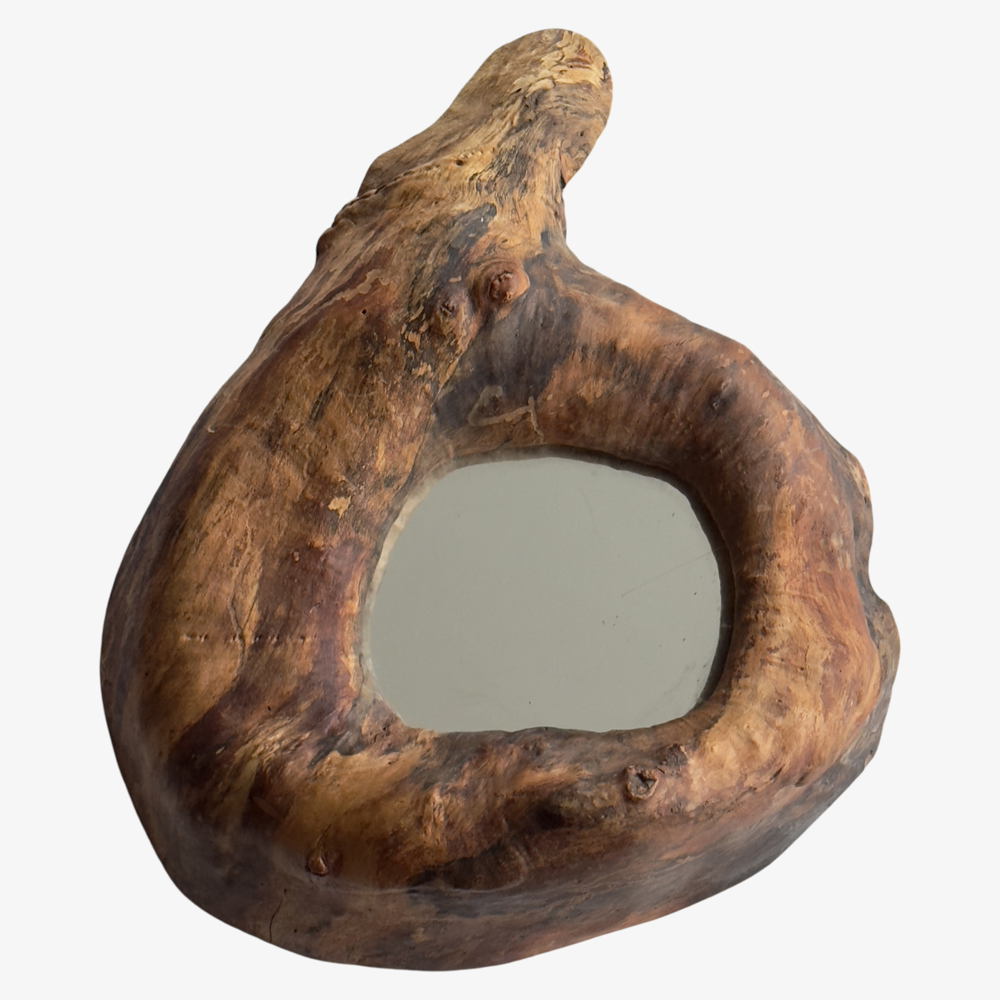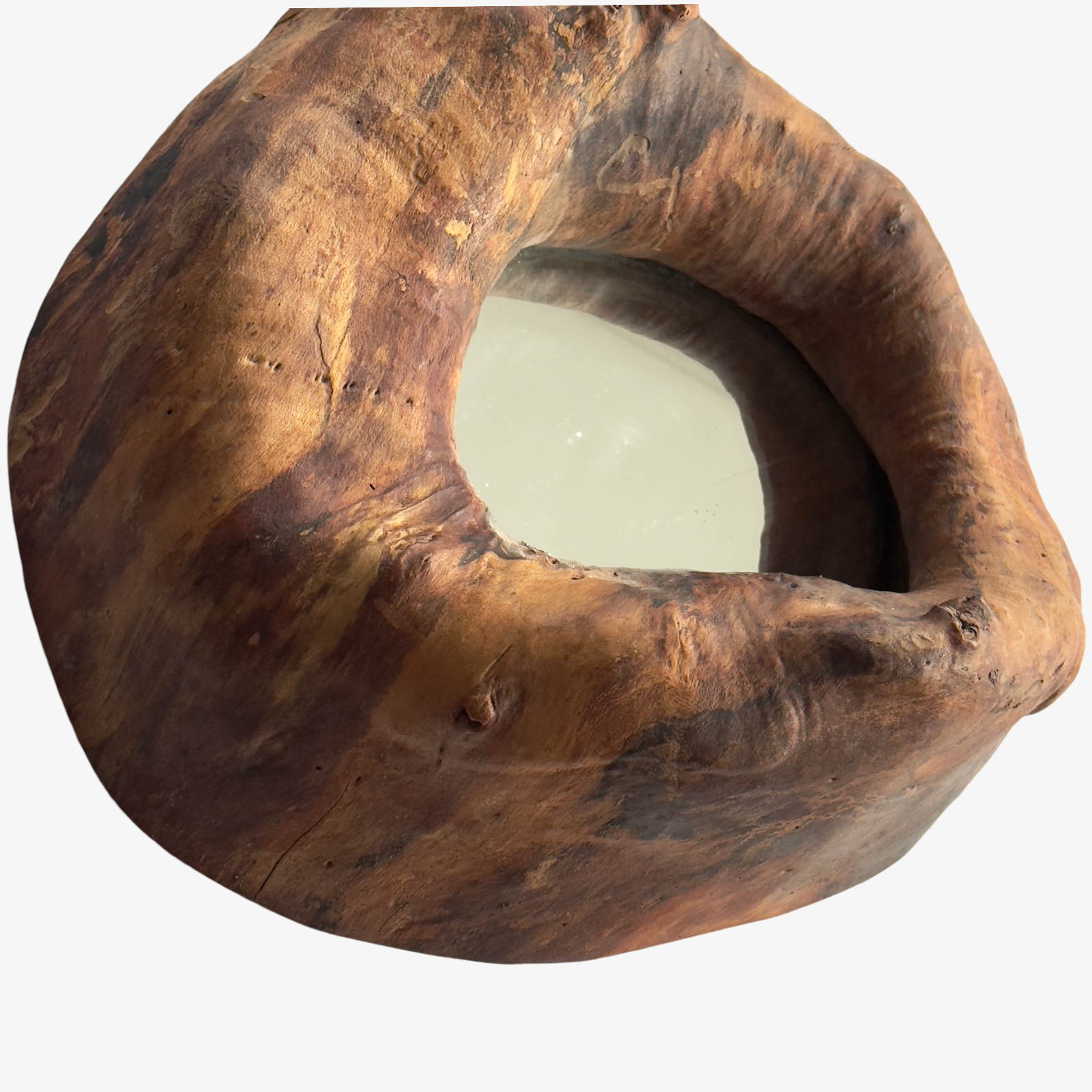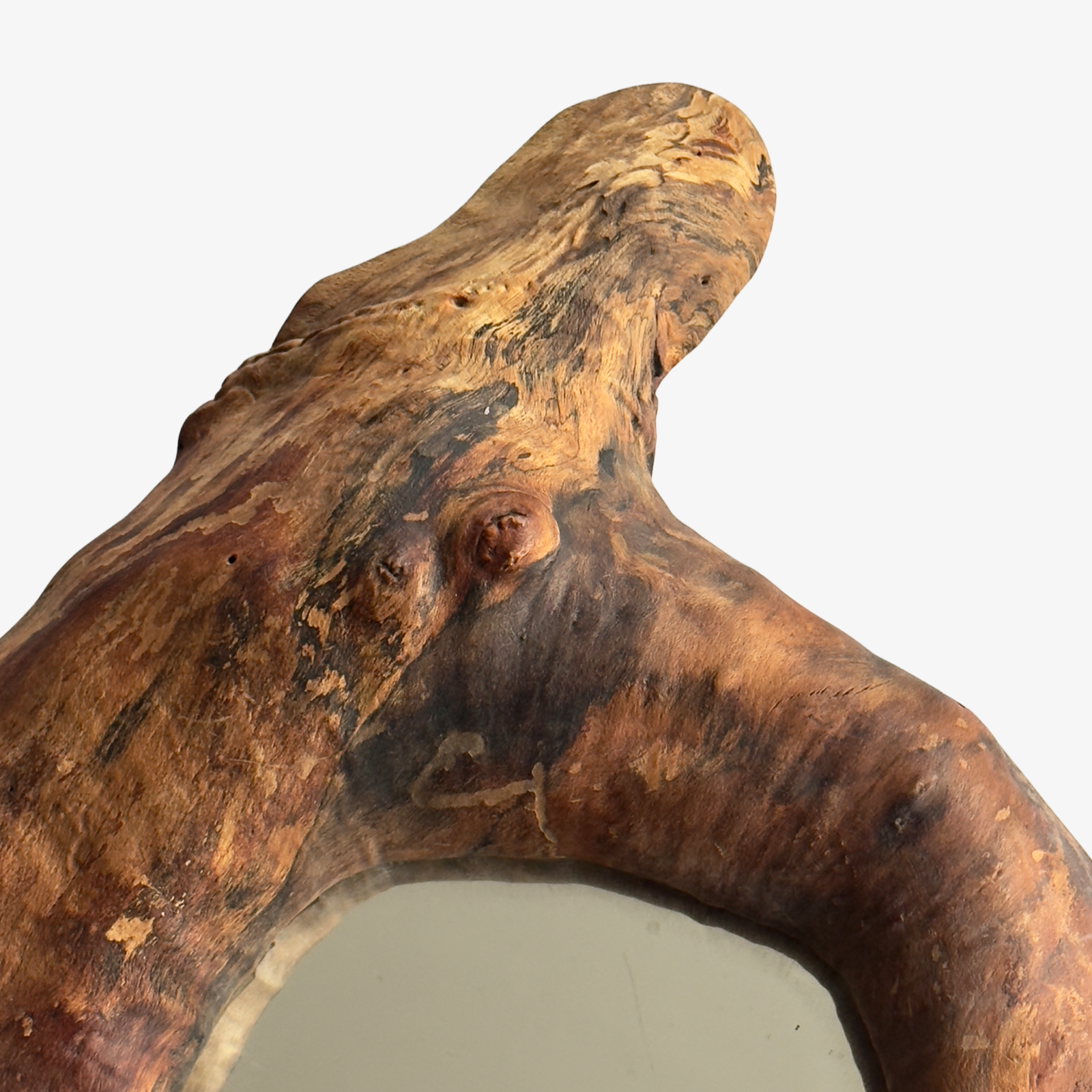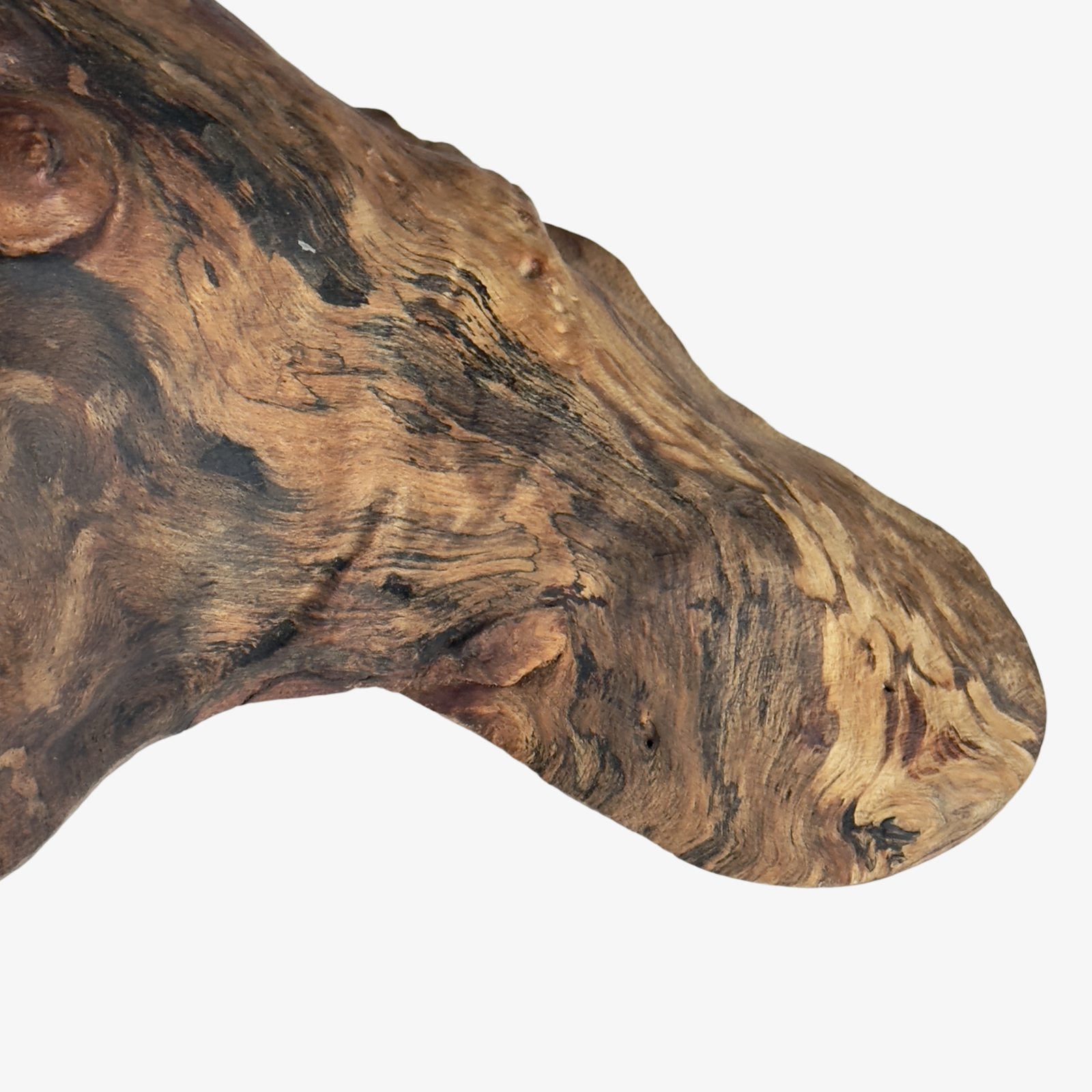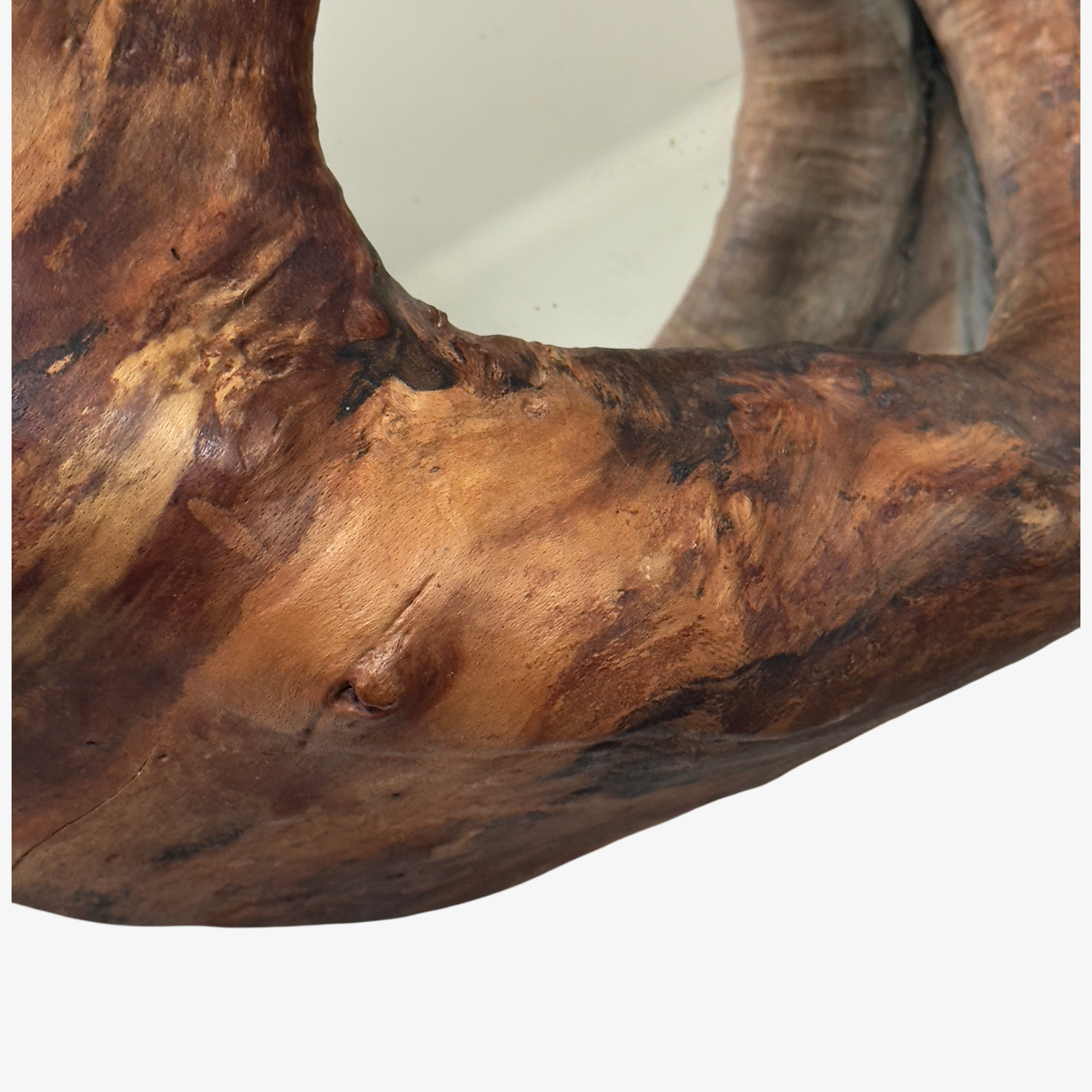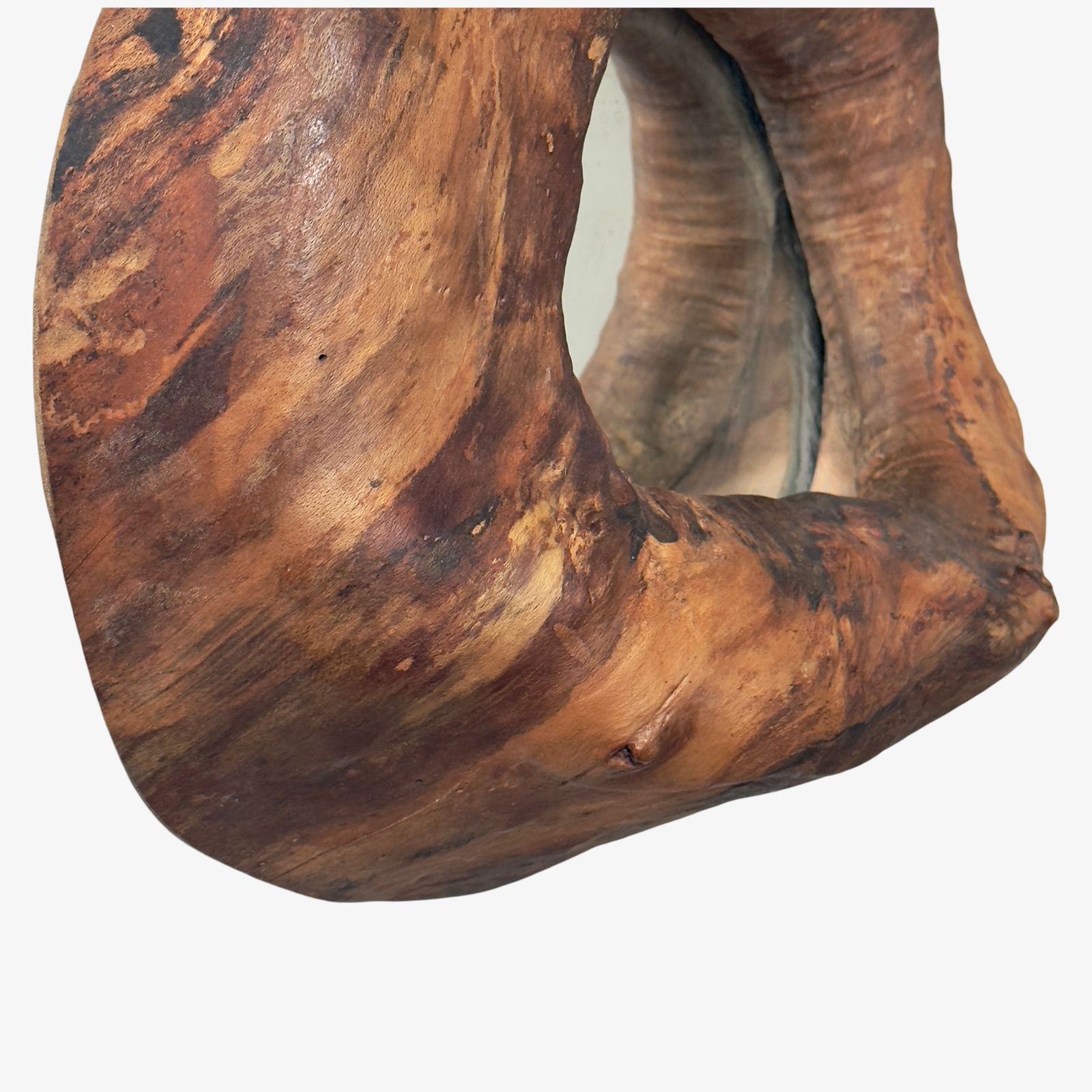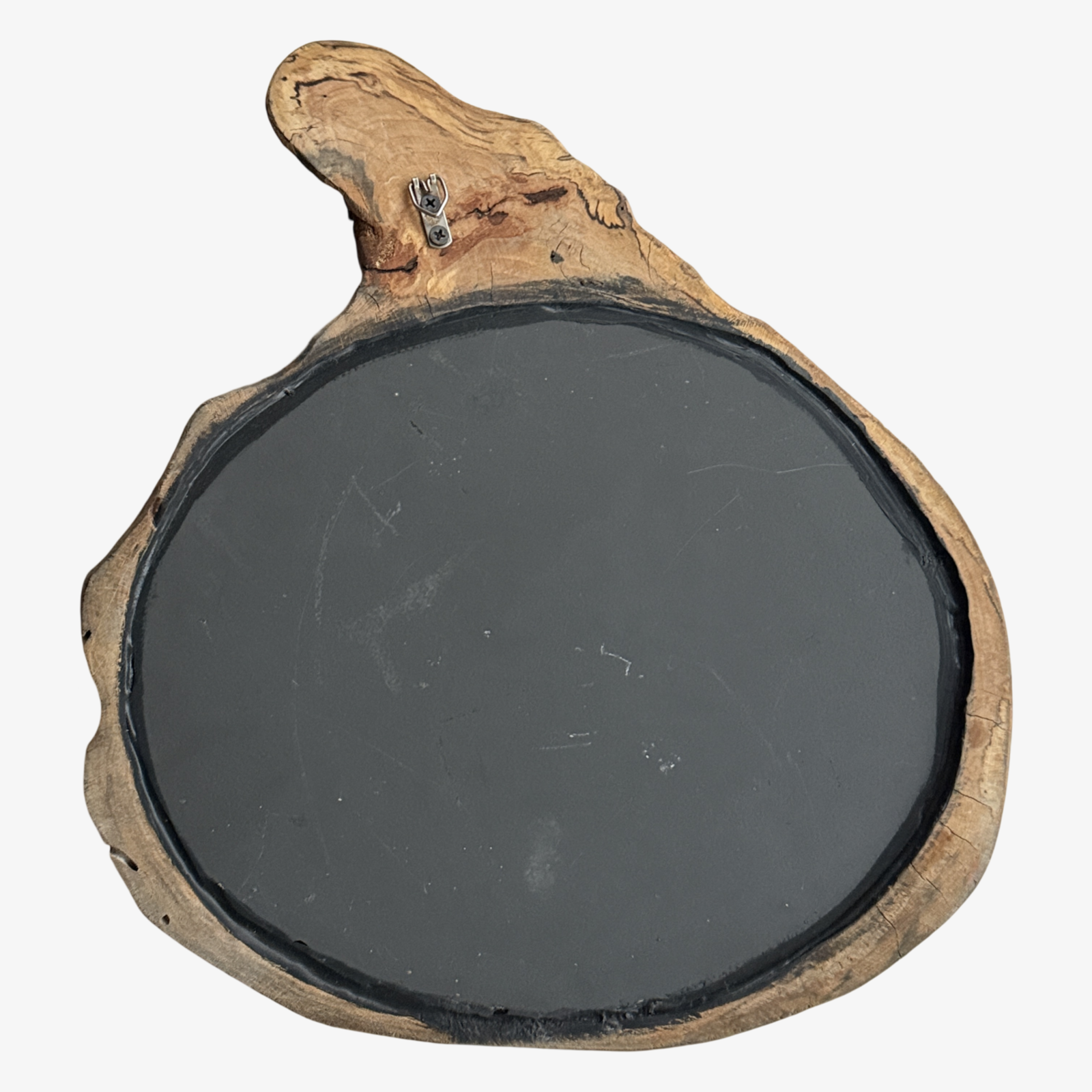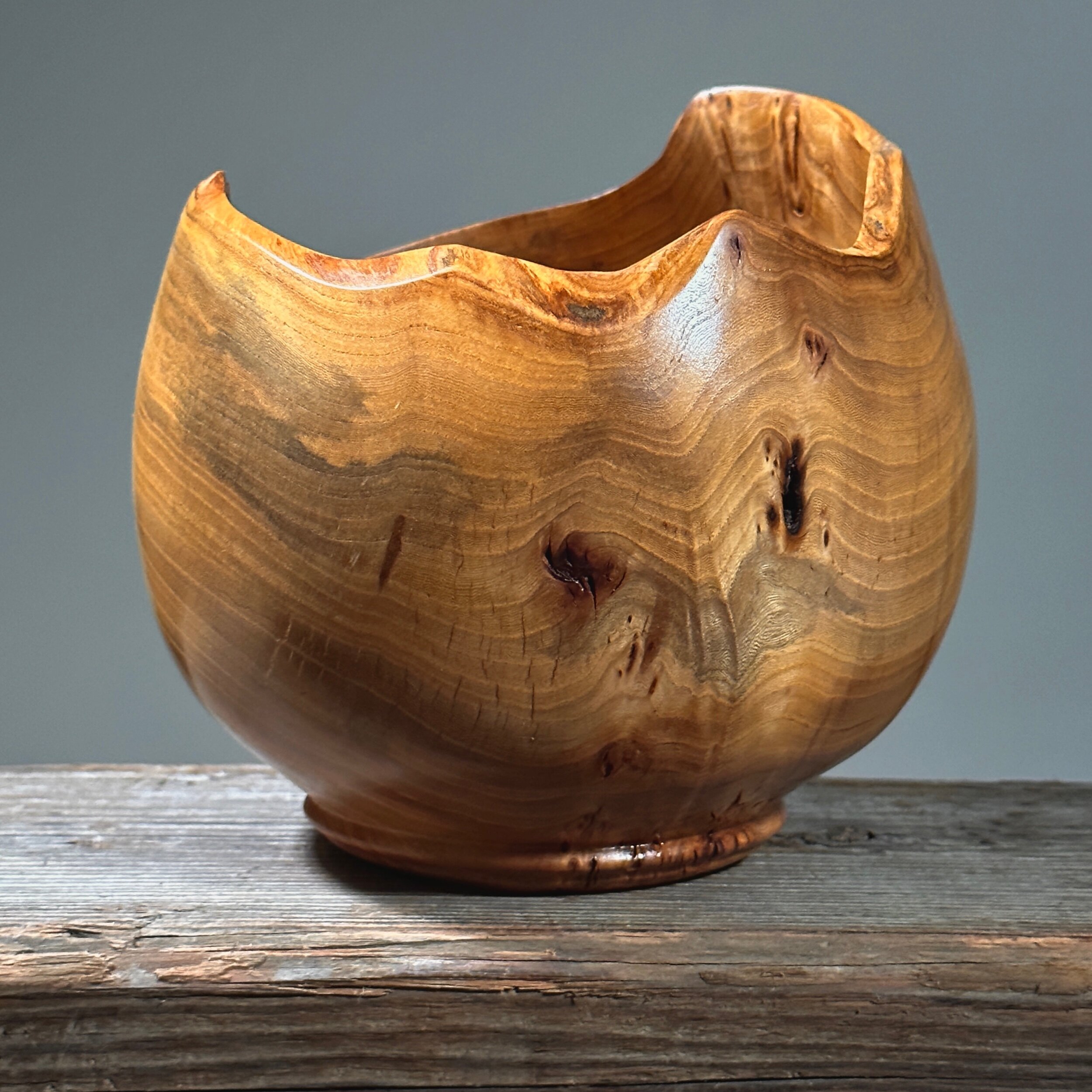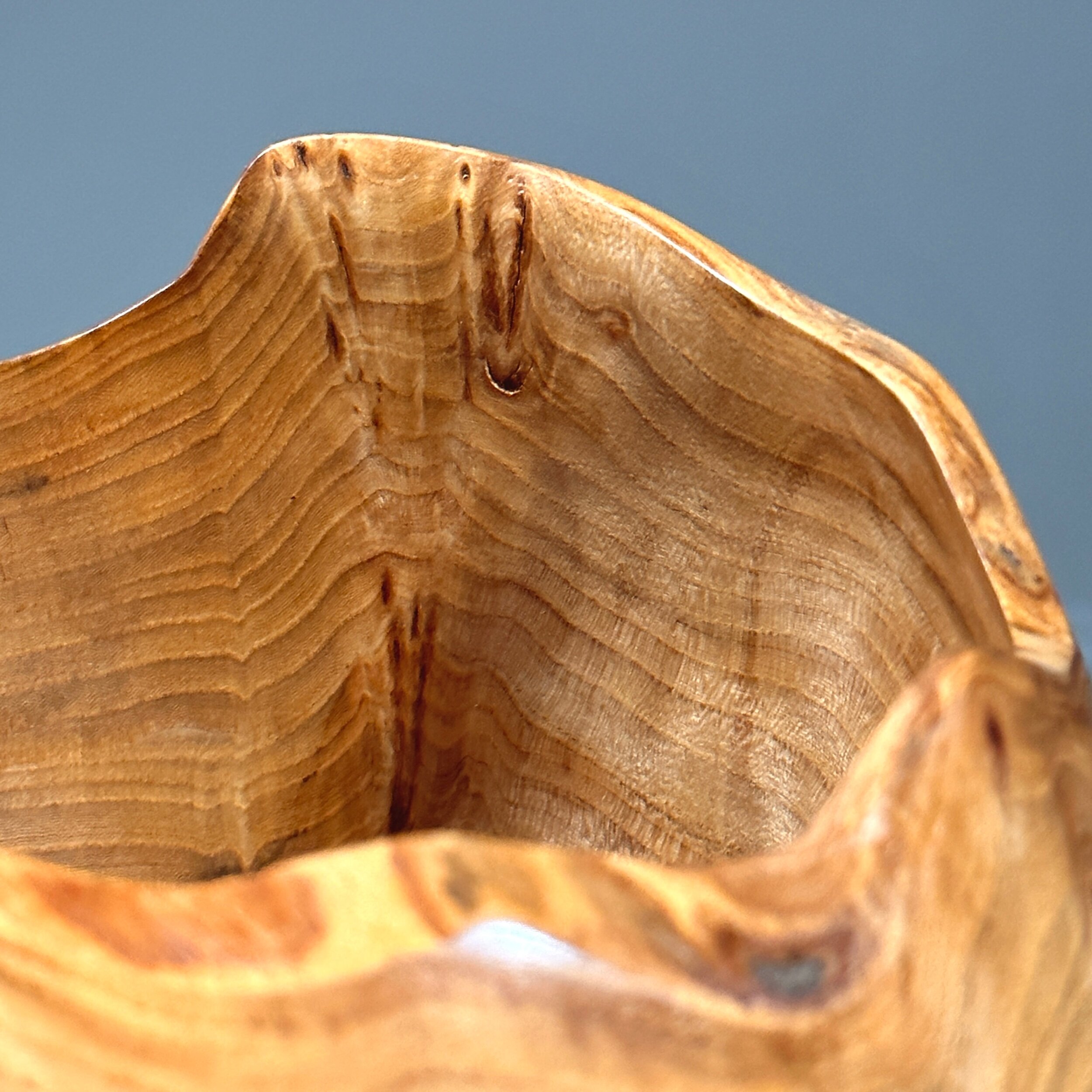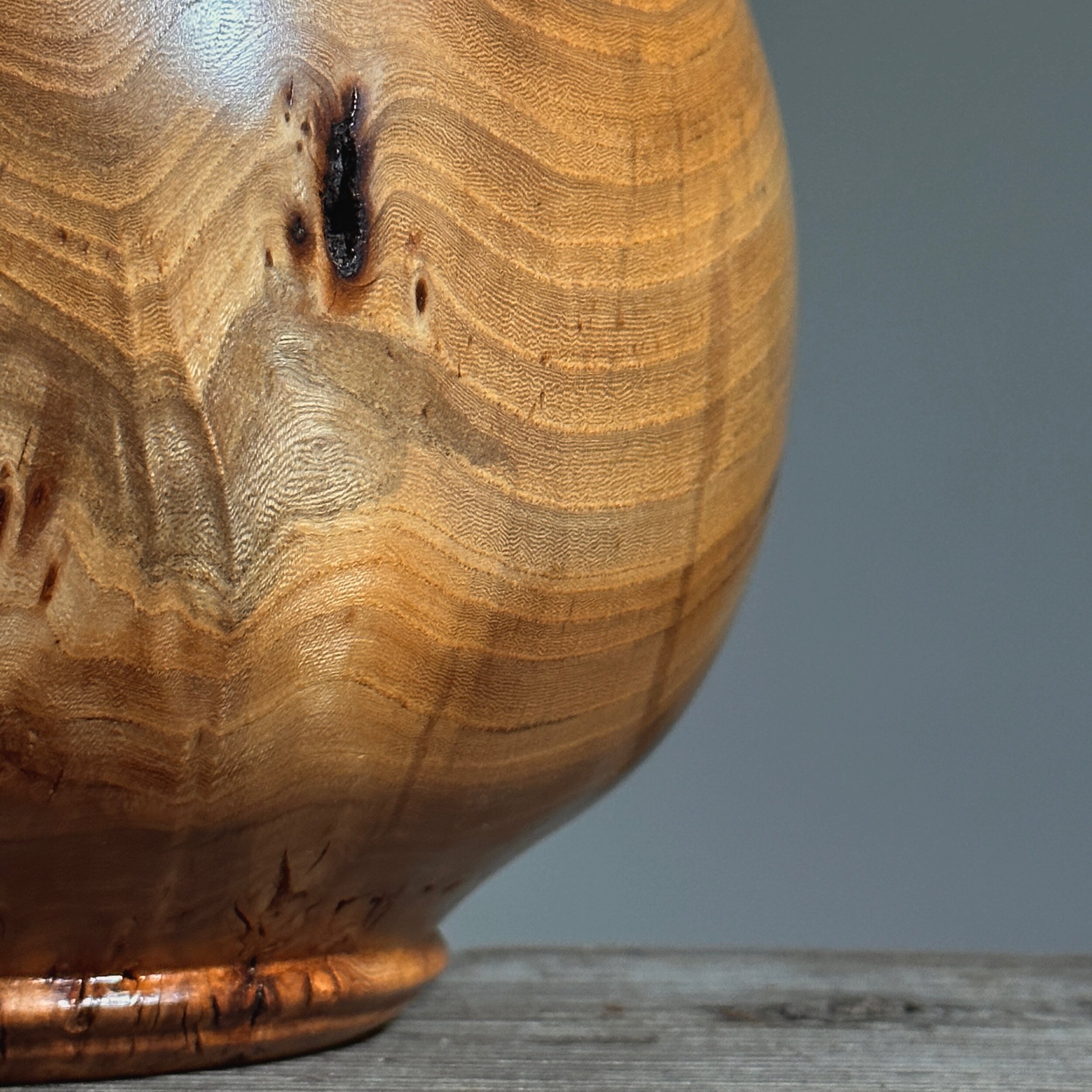 Image 1 of 11
Image 1 of 11

 Image 2 of 11
Image 2 of 11

 Image 3 of 11
Image 3 of 11

 Image 4 of 11
Image 4 of 11

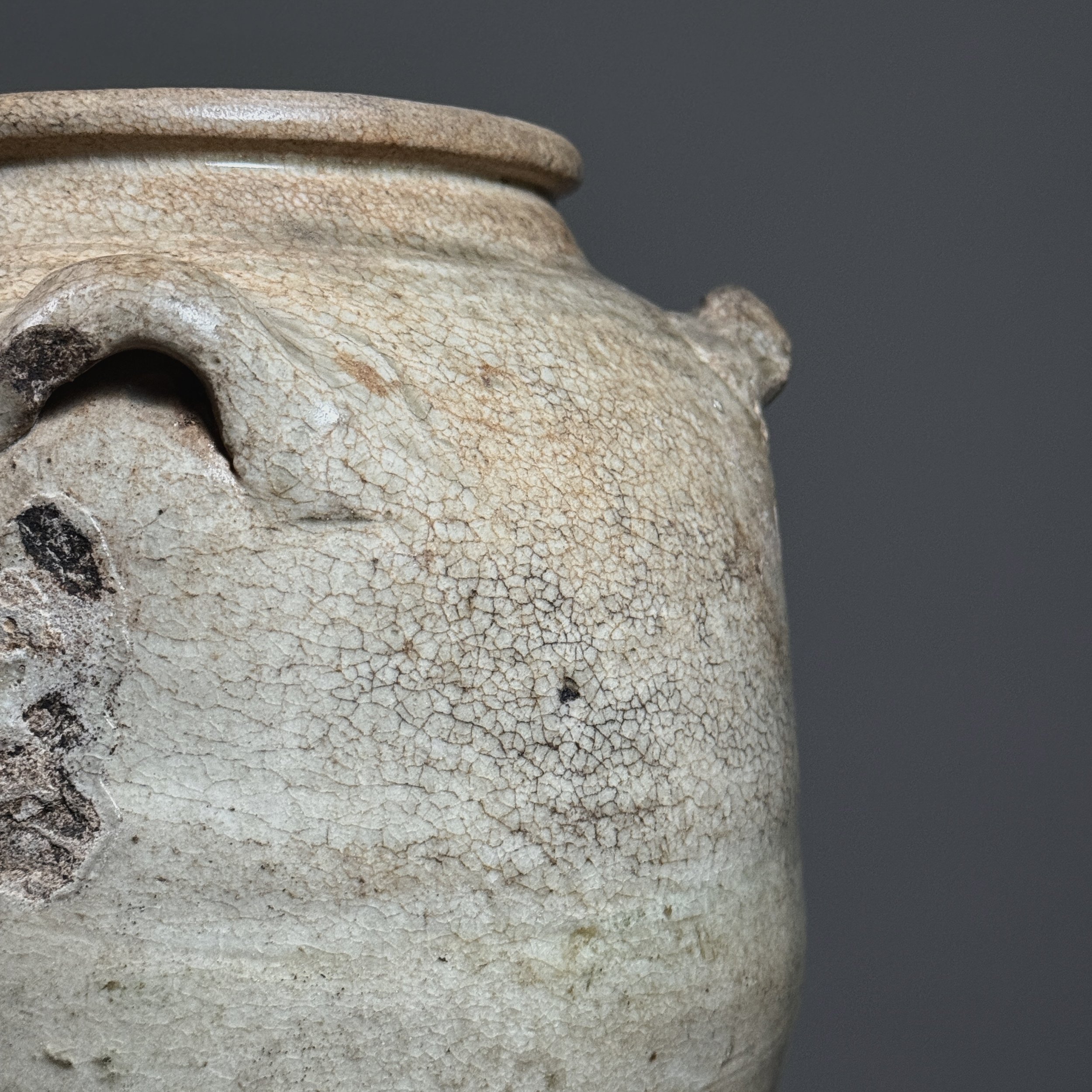 Image 5 of 11
Image 5 of 11

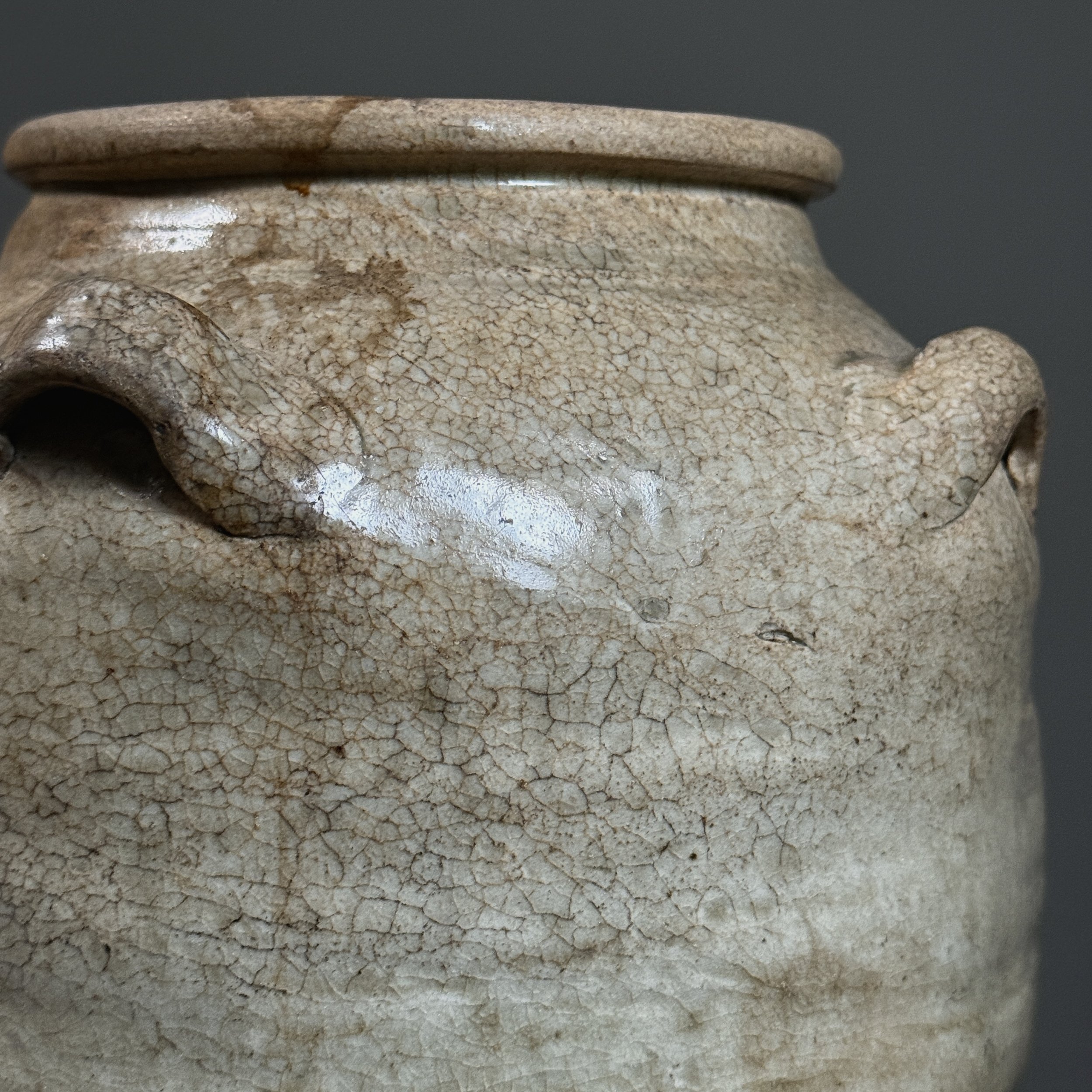 Image 6 of 11
Image 6 of 11

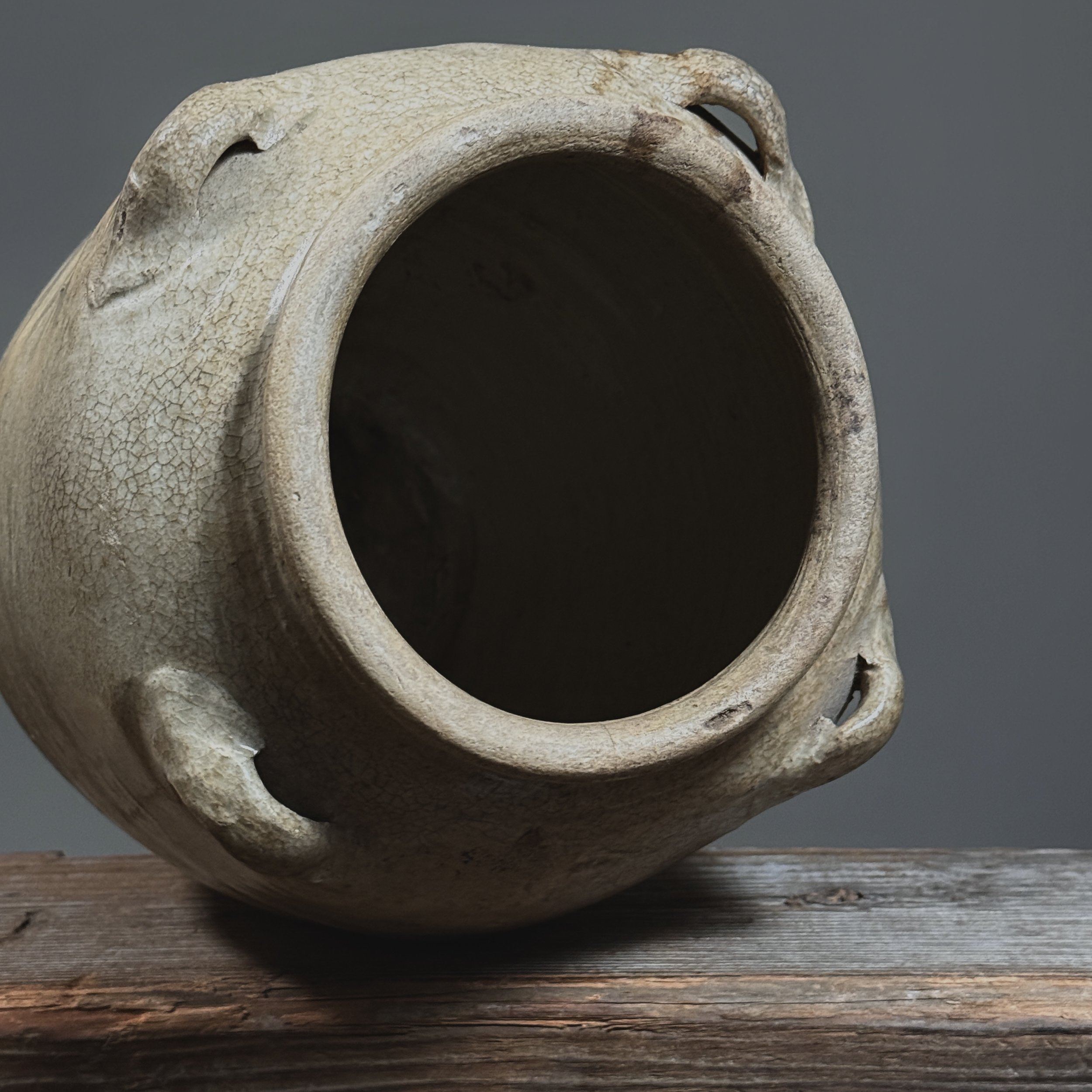 Image 7 of 11
Image 7 of 11

 Image 8 of 11
Image 8 of 11

 Image 9 of 11
Image 9 of 11

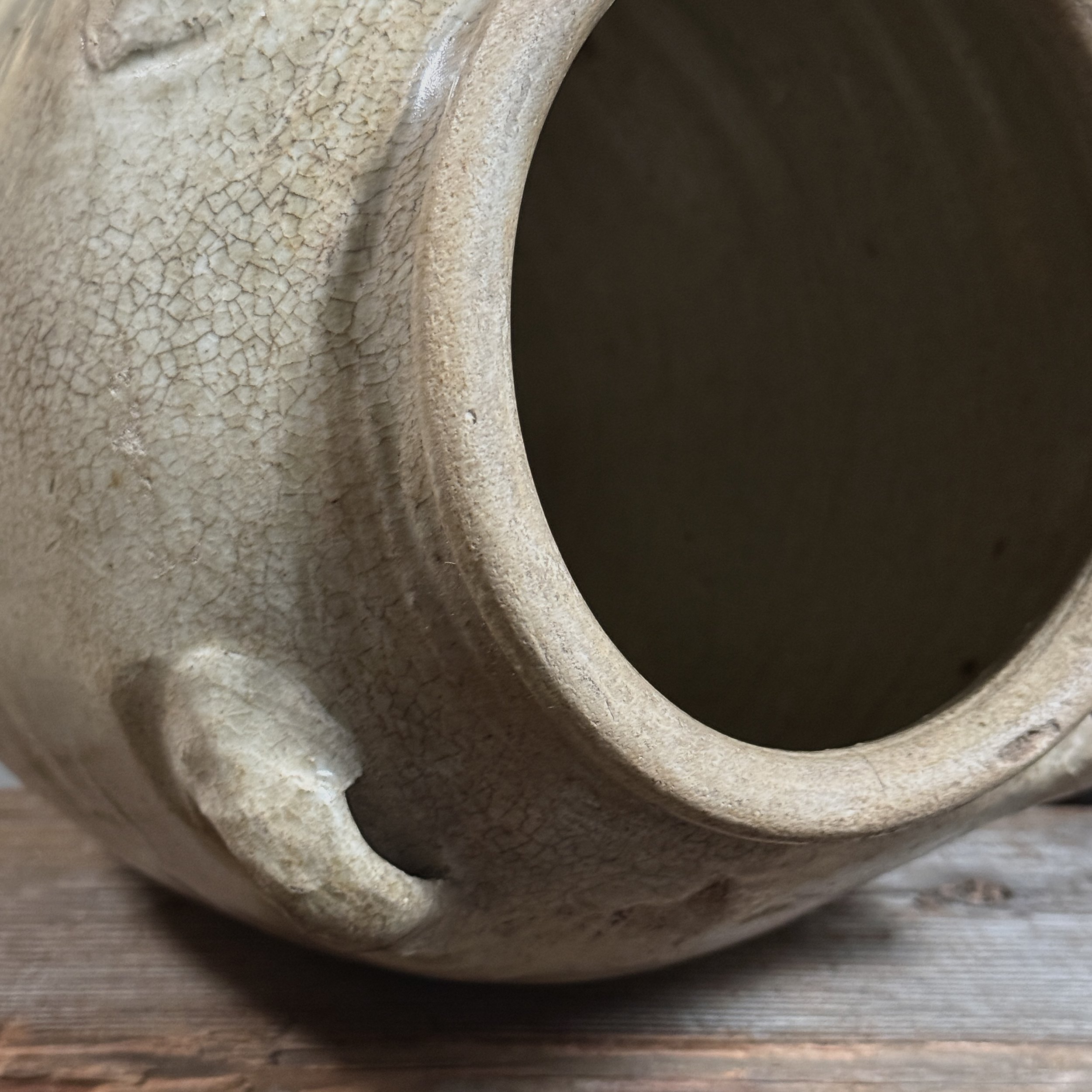 Image 10 of 11
Image 10 of 11

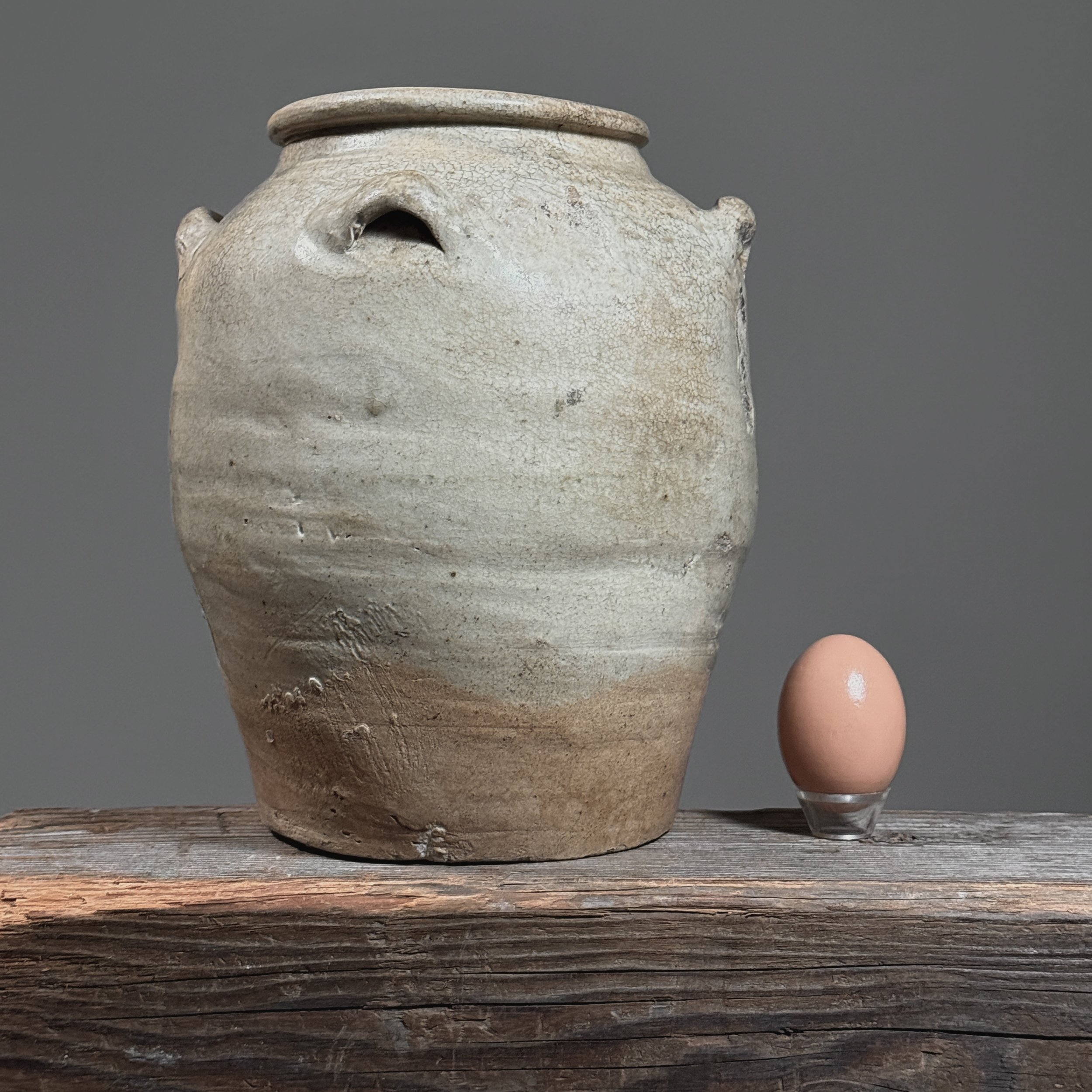 Image 11 of 11
Image 11 of 11












Antique 17th Century Chinese Four-Handled Glazed Jar
Chinese Four-Handled Jar
17th century, Ming-Qing transition period
Beige stoneware with crackled off white glaze
Height: 9.5 in (24 cm) | Diameter: 8 in (20 cm)
This storage jar exemplifies the vernacular utilitarian wares produced in regional Chinese kilns during the 17th century. Its form features four sturdy lug handles positioned at the shoulder - a practical design for transportation and daily use. The vessel's crackled glaze, with its subtle ivory tone and intentional imperfections, reflects the natural aesthetic values of provincial pottery traditions. Surviving in intact condition, the jar displays characteristic glaze variations that attest to its wood-firing origins and centuries of careful use.
Historical Context:
Such four-handled jars were commonly used for storing dry goods, oils, or fermented products in both domestic and commercial settings. The unpretentious beauty of these wares - with their accidental glaze effects and organic forms - later influenced the Mingei (folk craft) movement's appreciation of honest, functional design.
Chinese Four-Handled Jar
17th century, Ming-Qing transition period
Beige stoneware with crackled off white glaze
Height: 9.5 in (24 cm) | Diameter: 8 in (20 cm)
This storage jar exemplifies the vernacular utilitarian wares produced in regional Chinese kilns during the 17th century. Its form features four sturdy lug handles positioned at the shoulder - a practical design for transportation and daily use. The vessel's crackled glaze, with its subtle ivory tone and intentional imperfections, reflects the natural aesthetic values of provincial pottery traditions. Surviving in intact condition, the jar displays characteristic glaze variations that attest to its wood-firing origins and centuries of careful use.
Historical Context:
Such four-handled jars were commonly used for storing dry goods, oils, or fermented products in both domestic and commercial settings. The unpretentious beauty of these wares - with their accidental glaze effects and organic forms - later influenced the Mingei (folk craft) movement's appreciation of honest, functional design.

